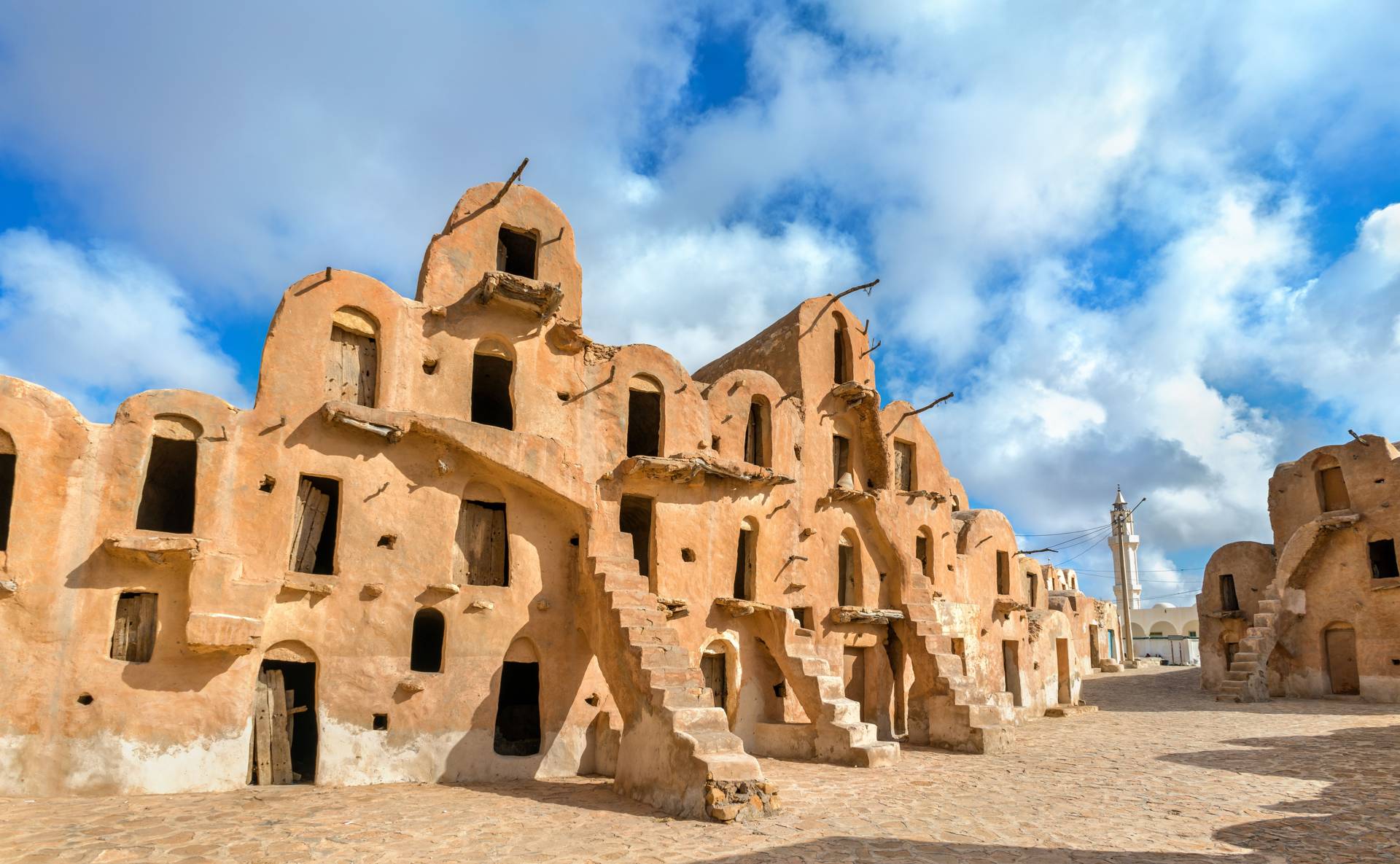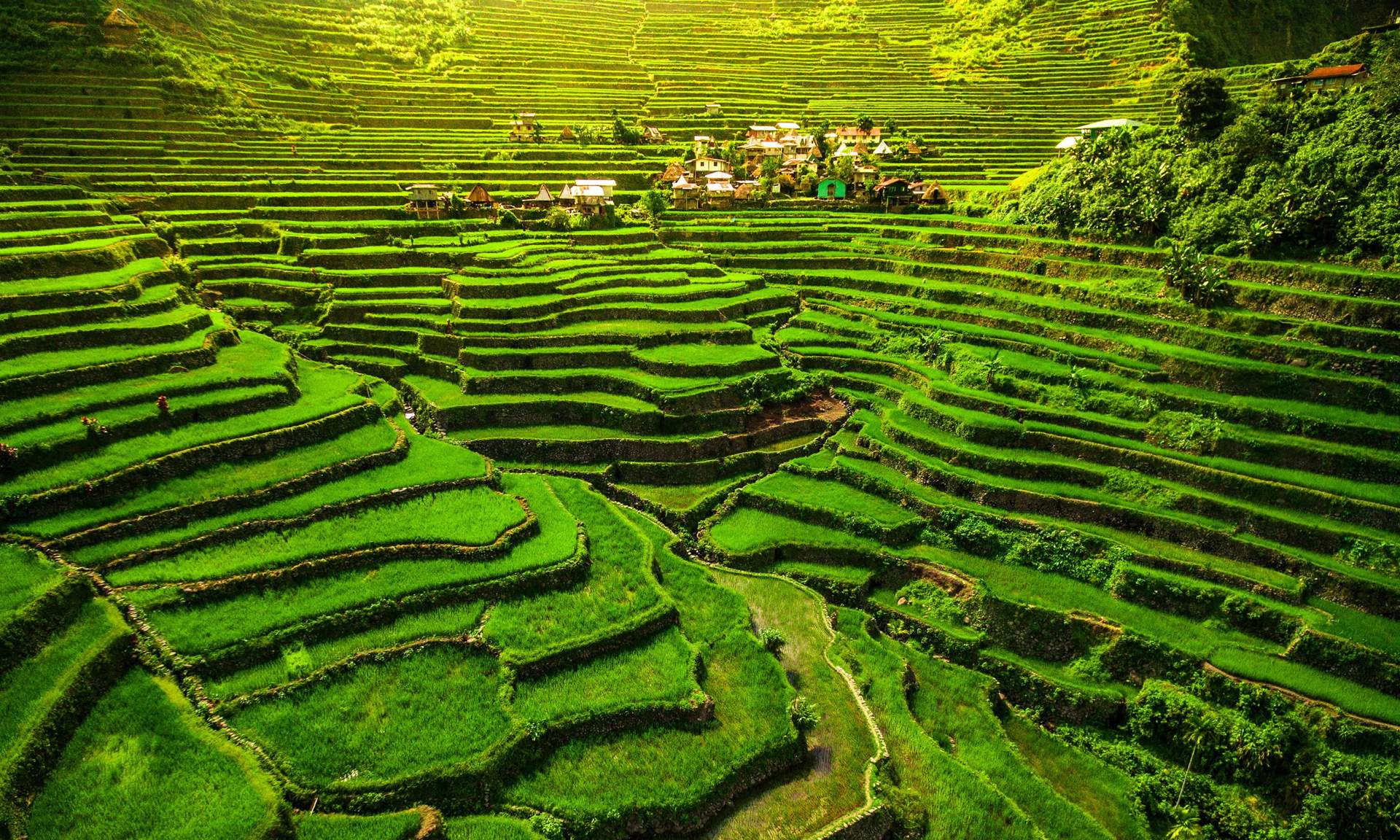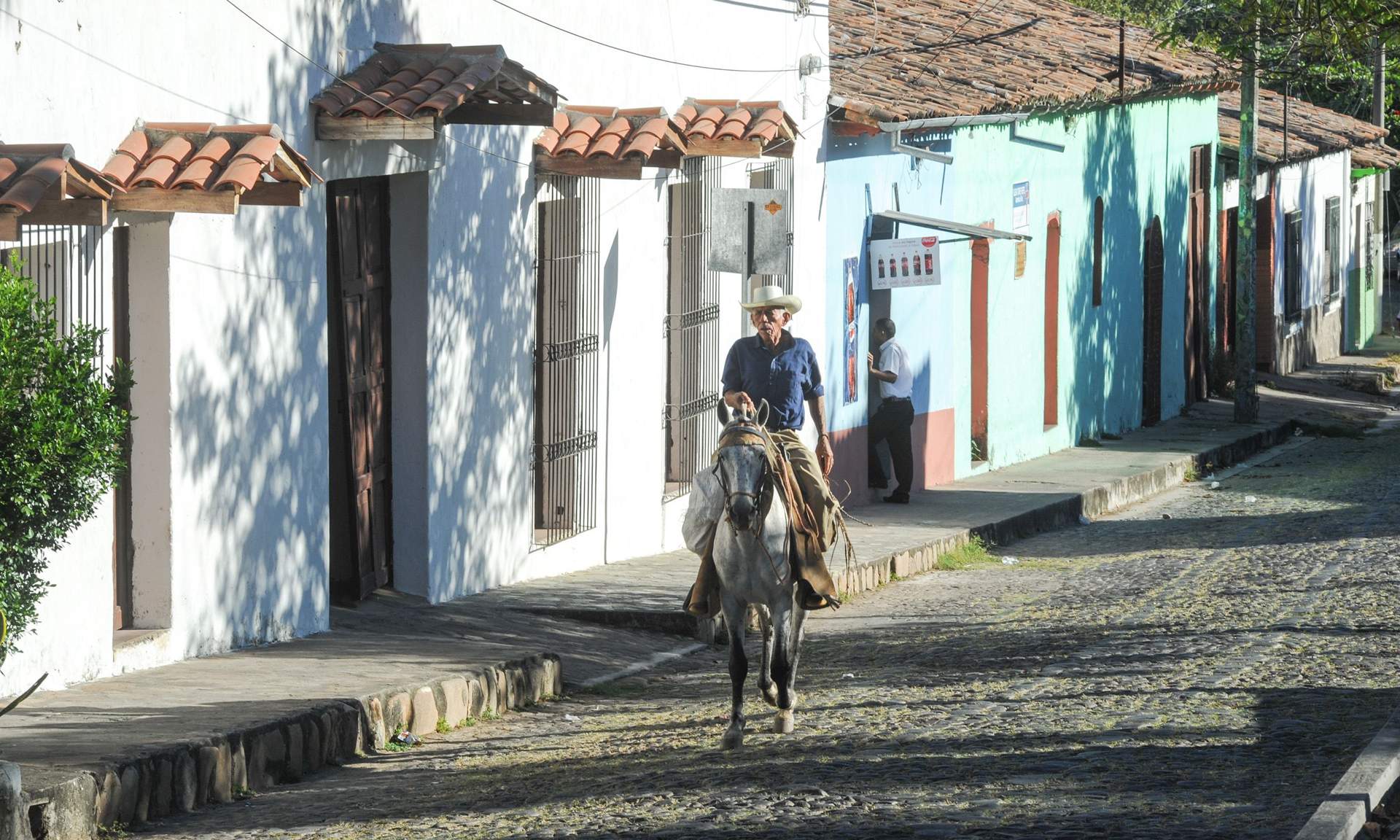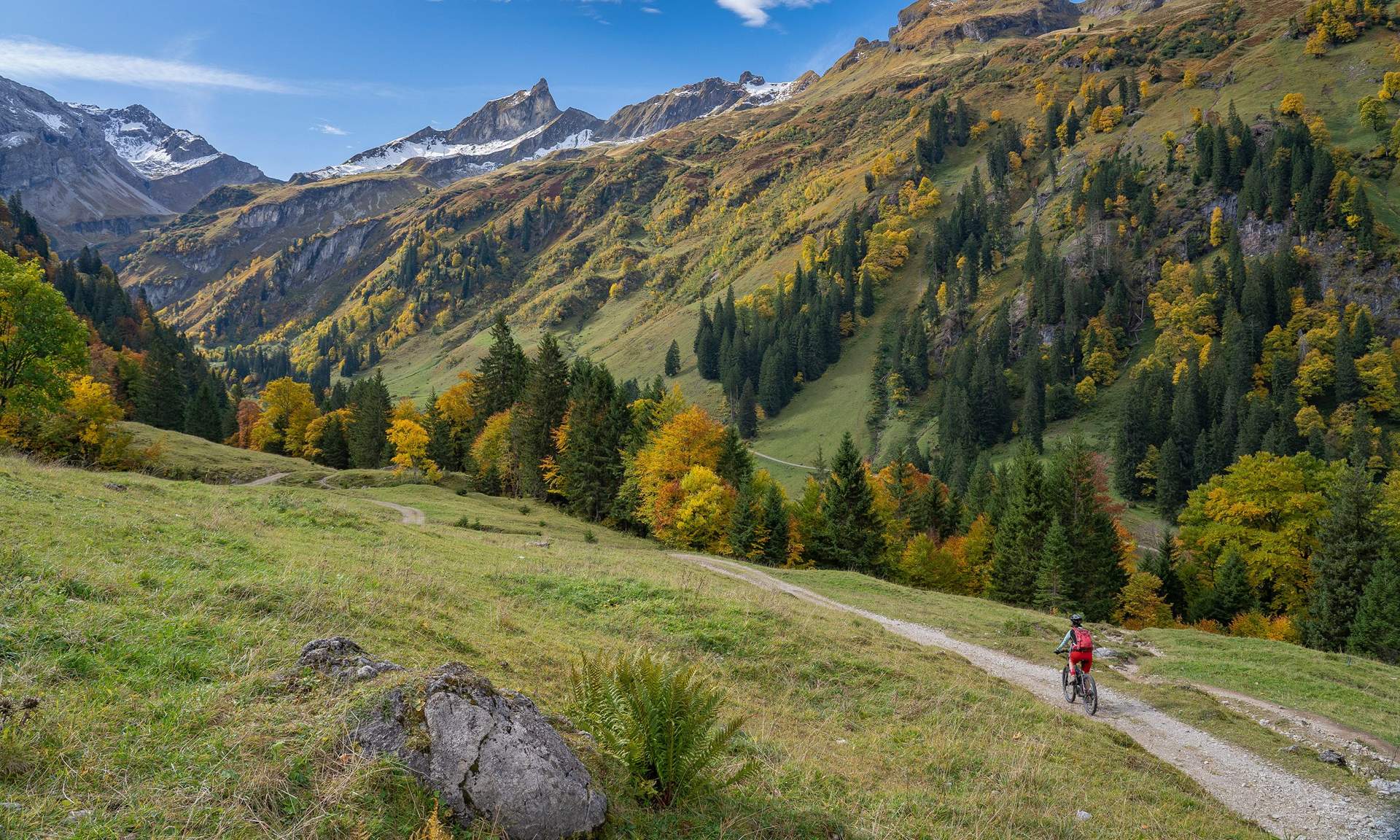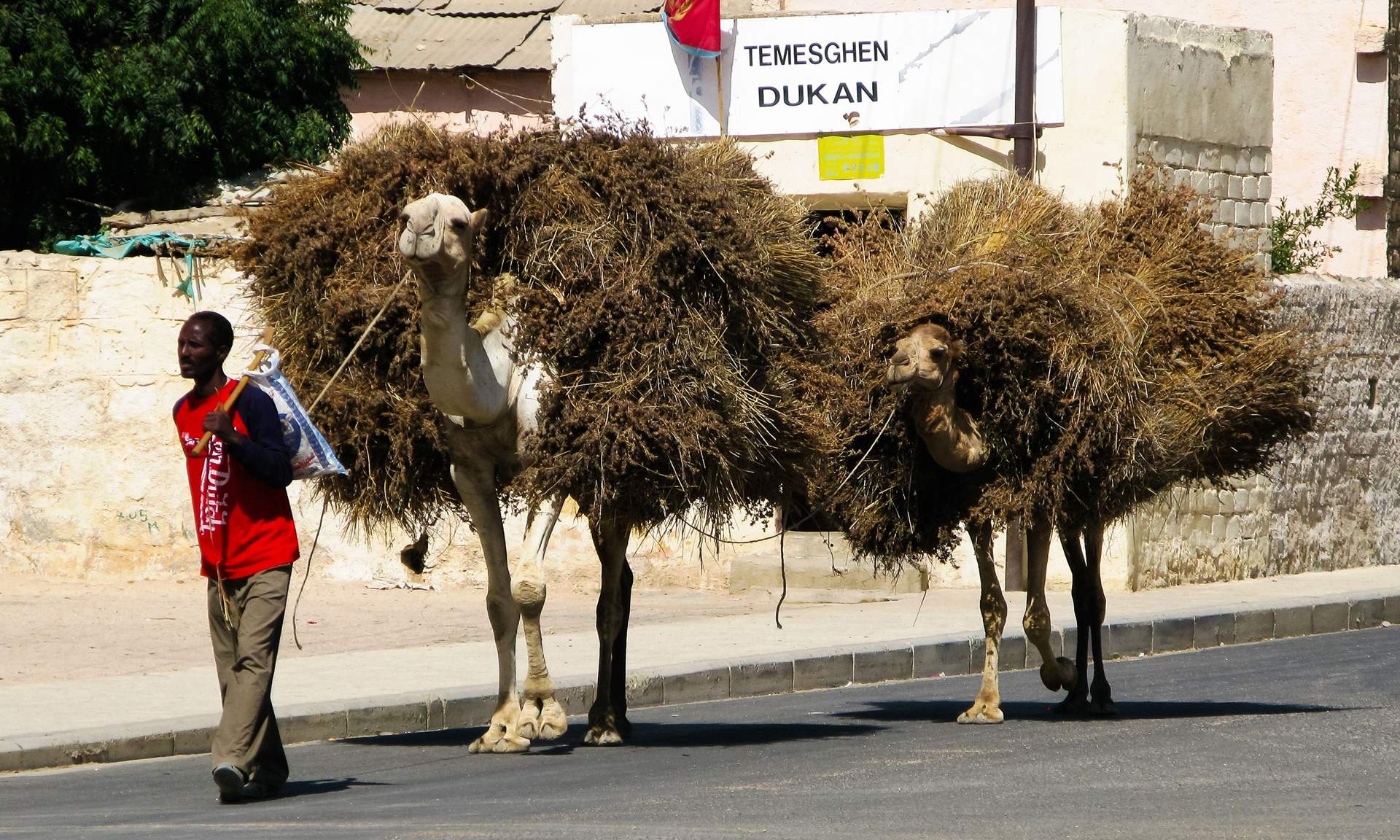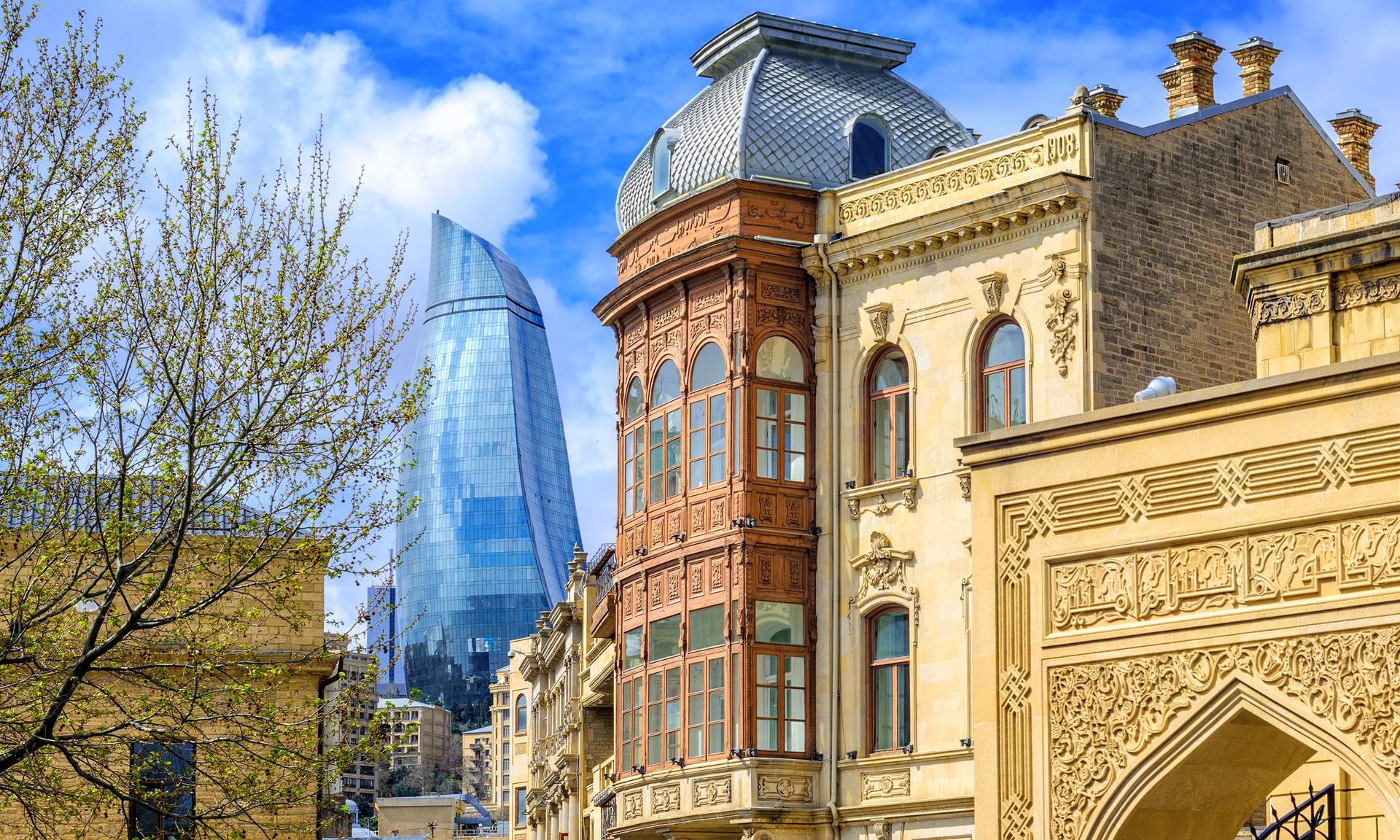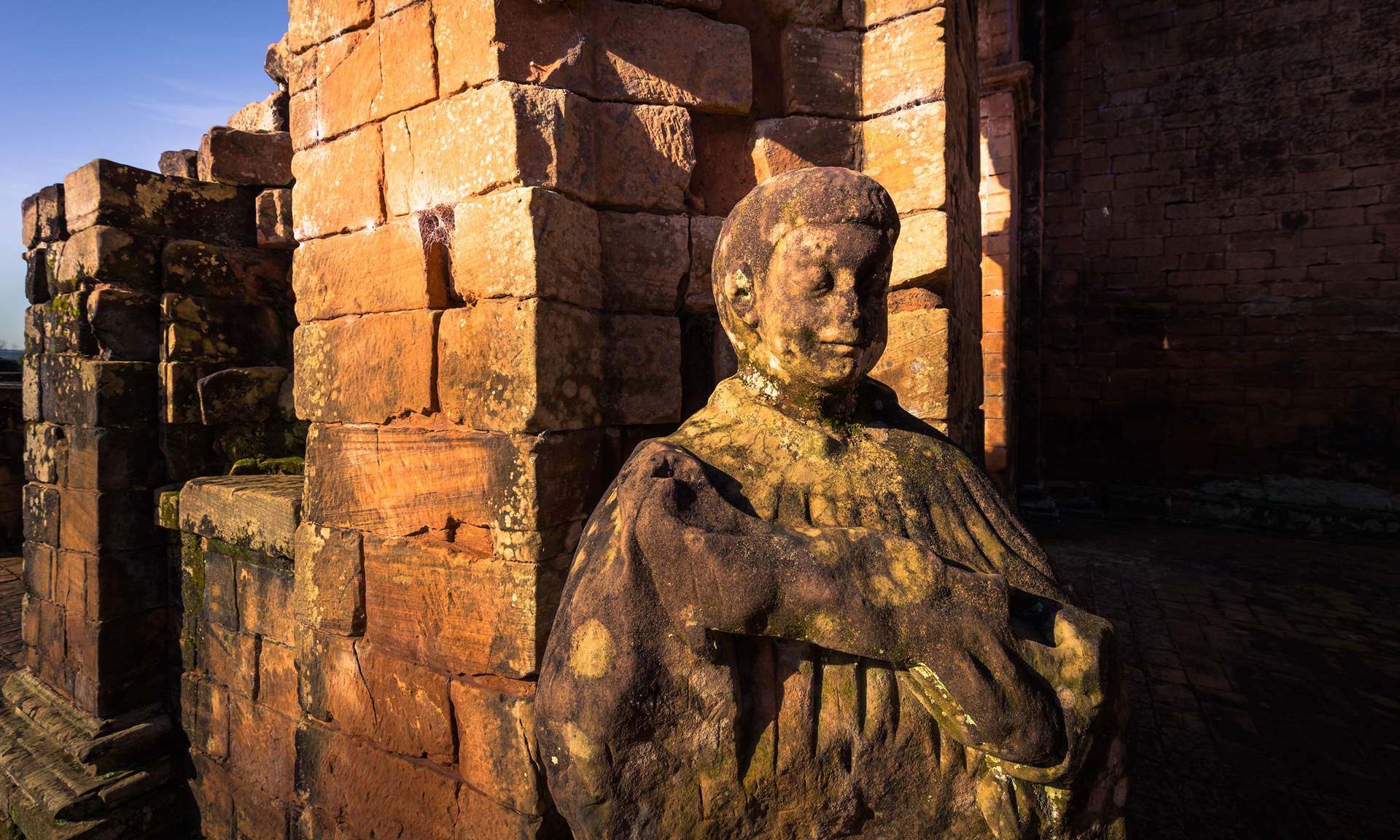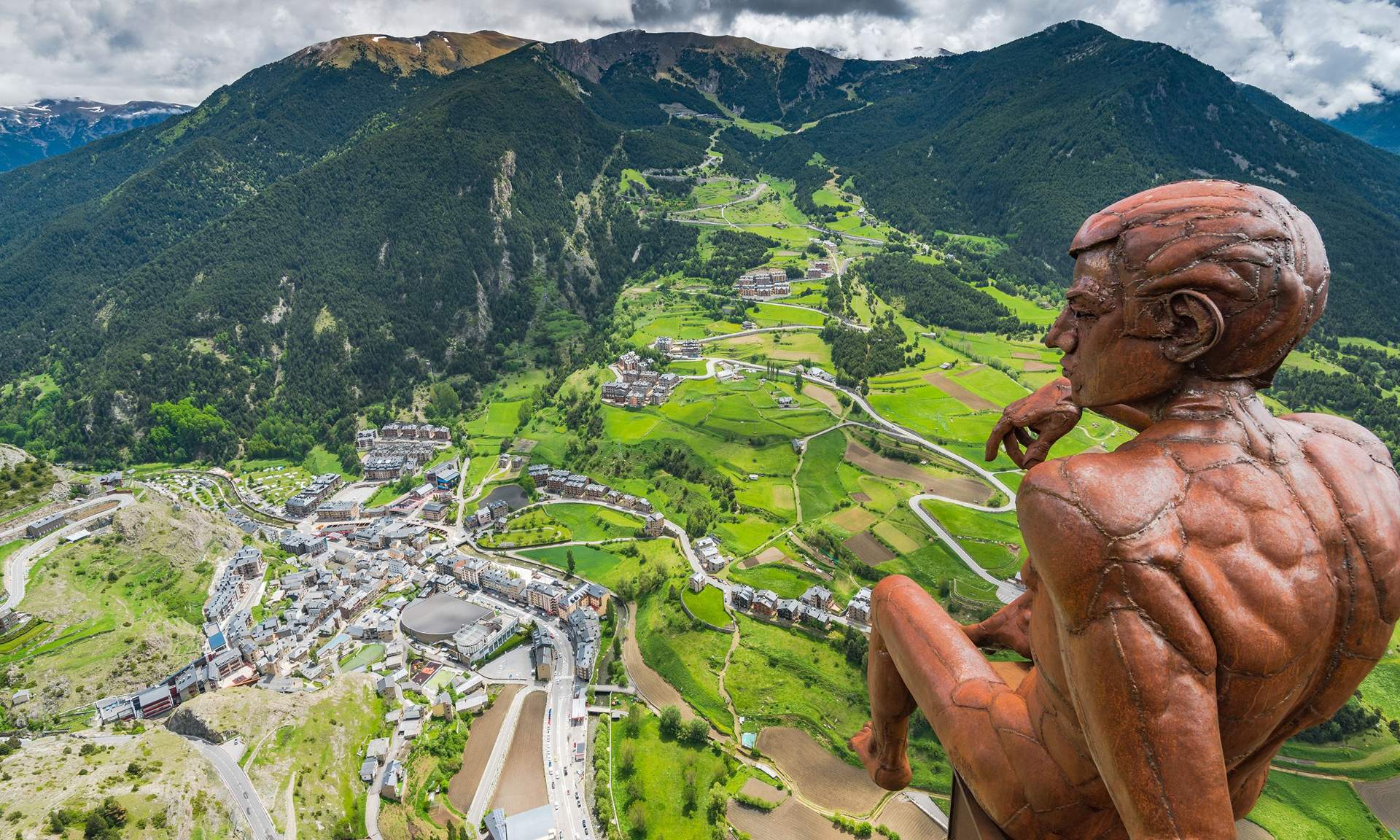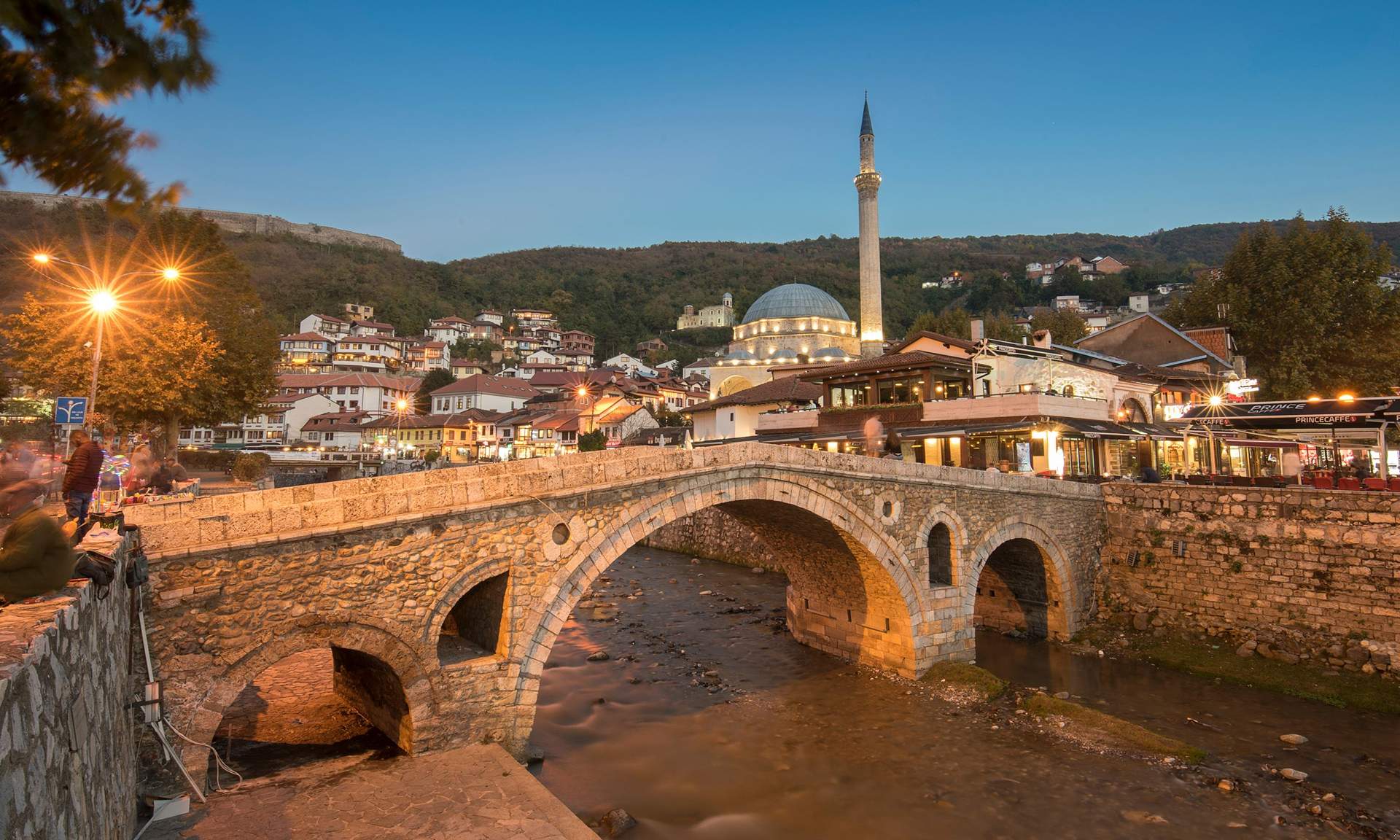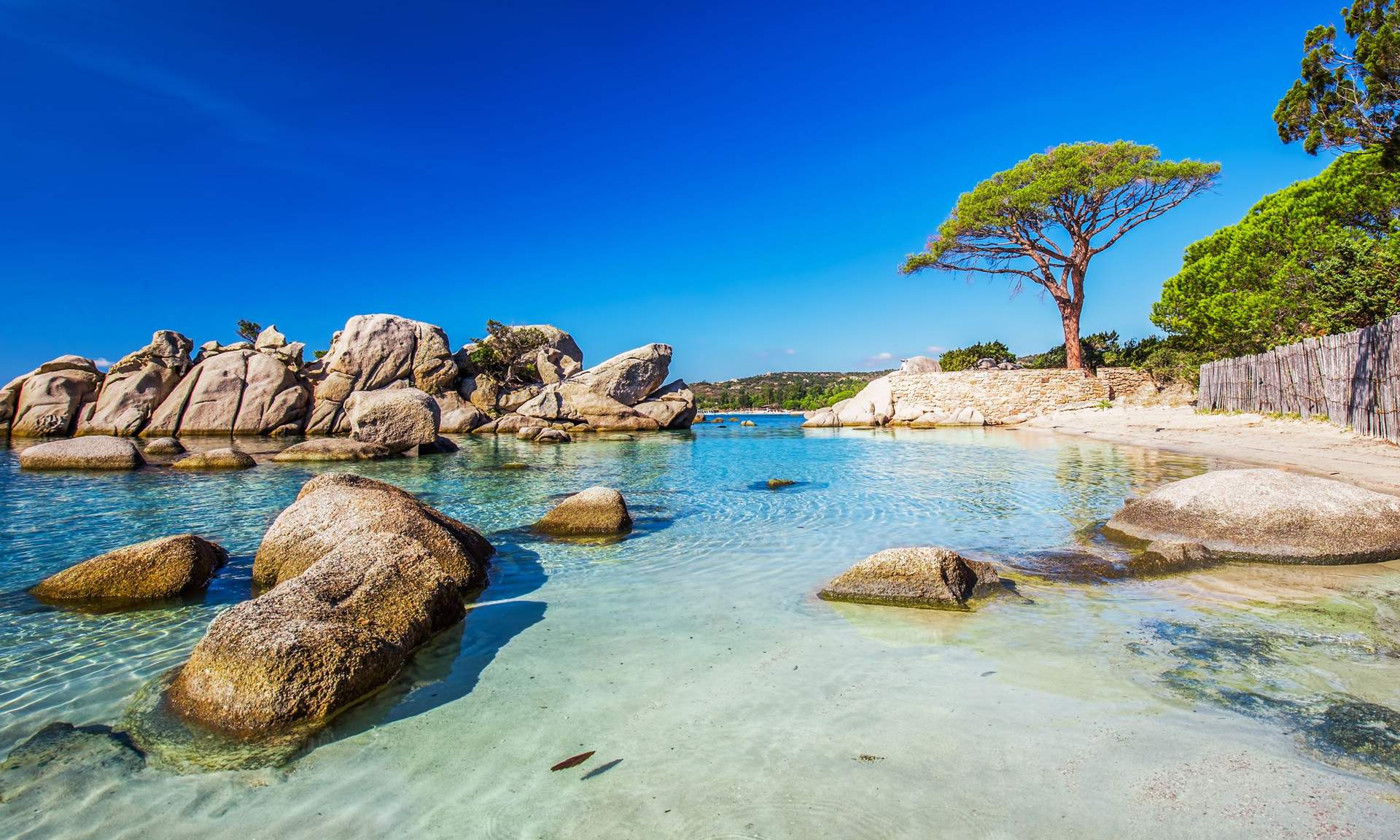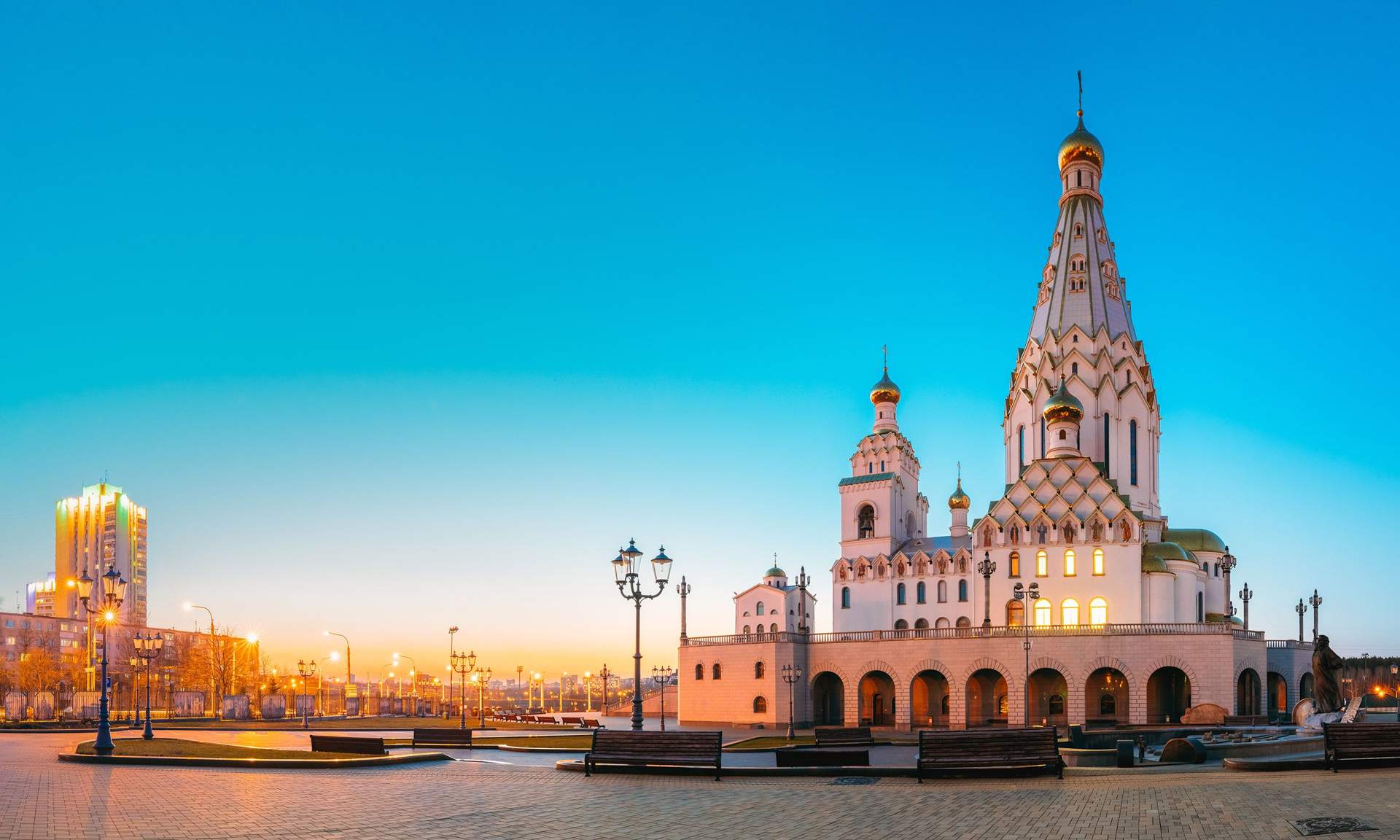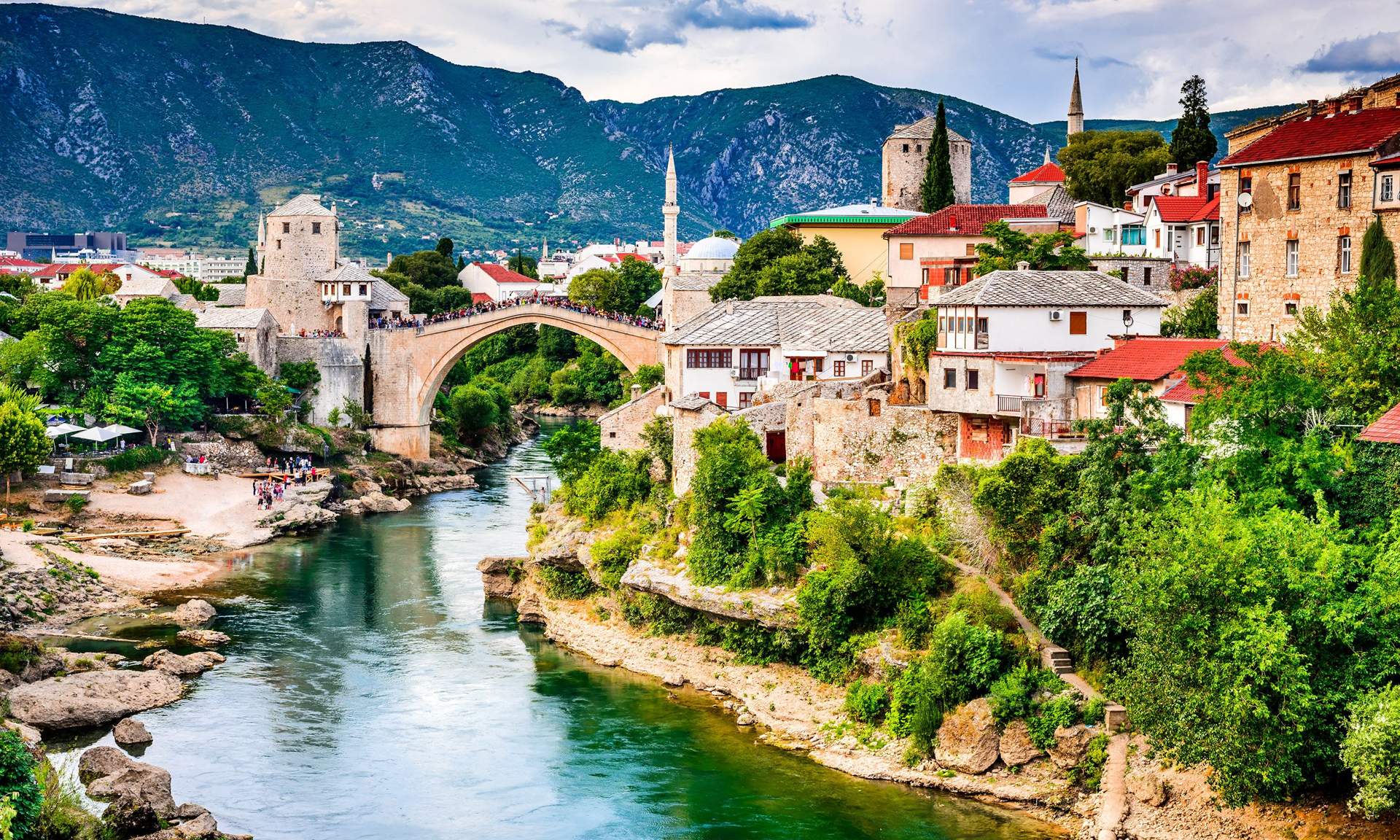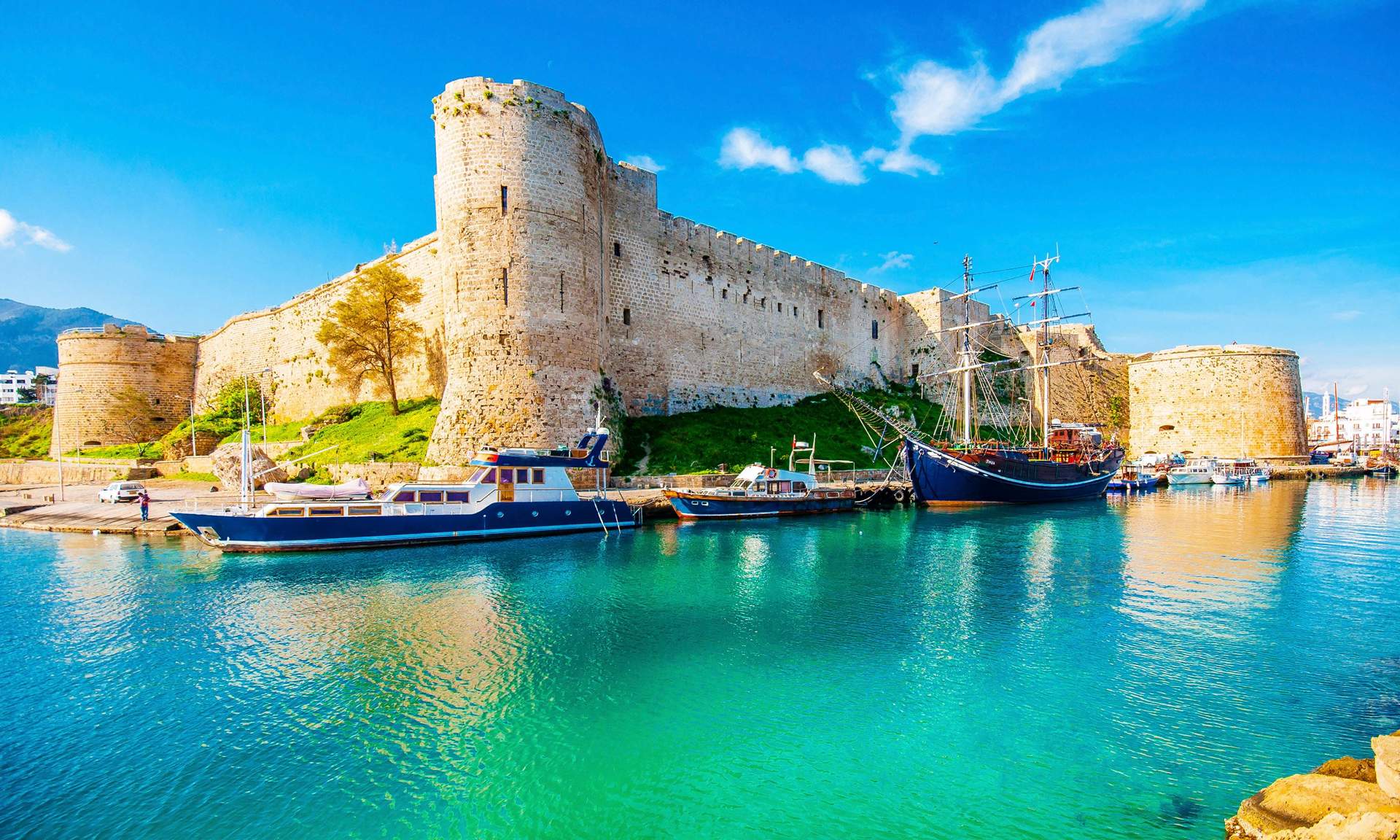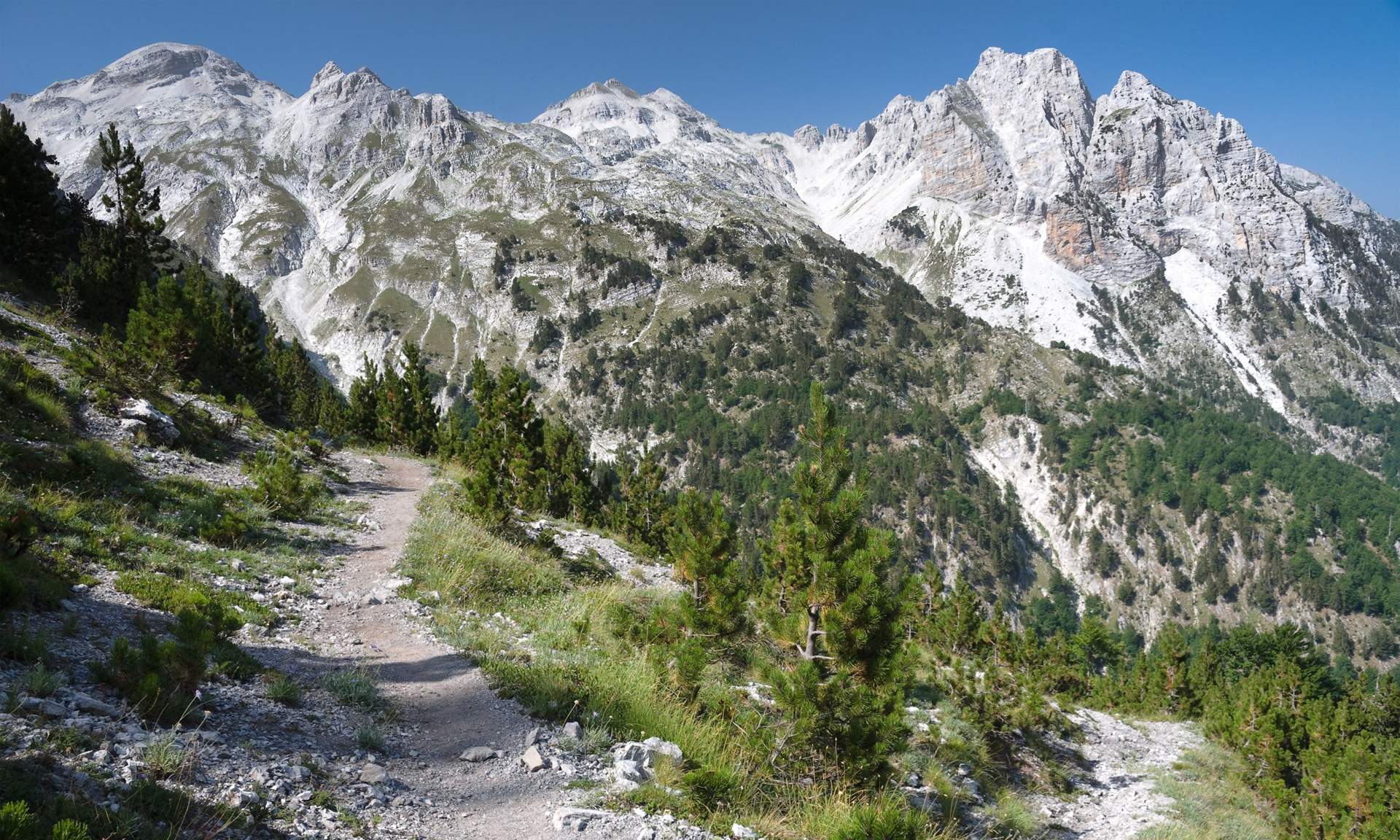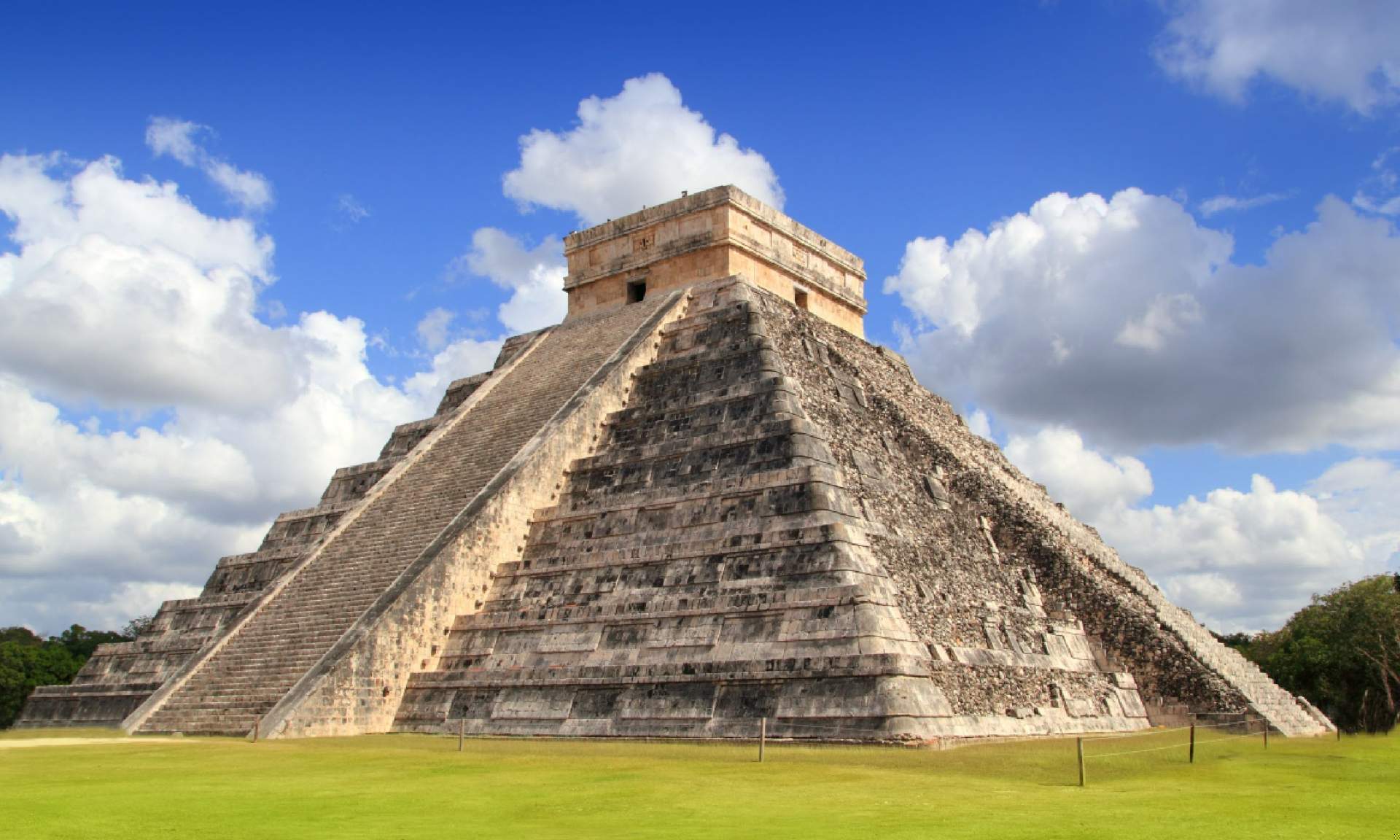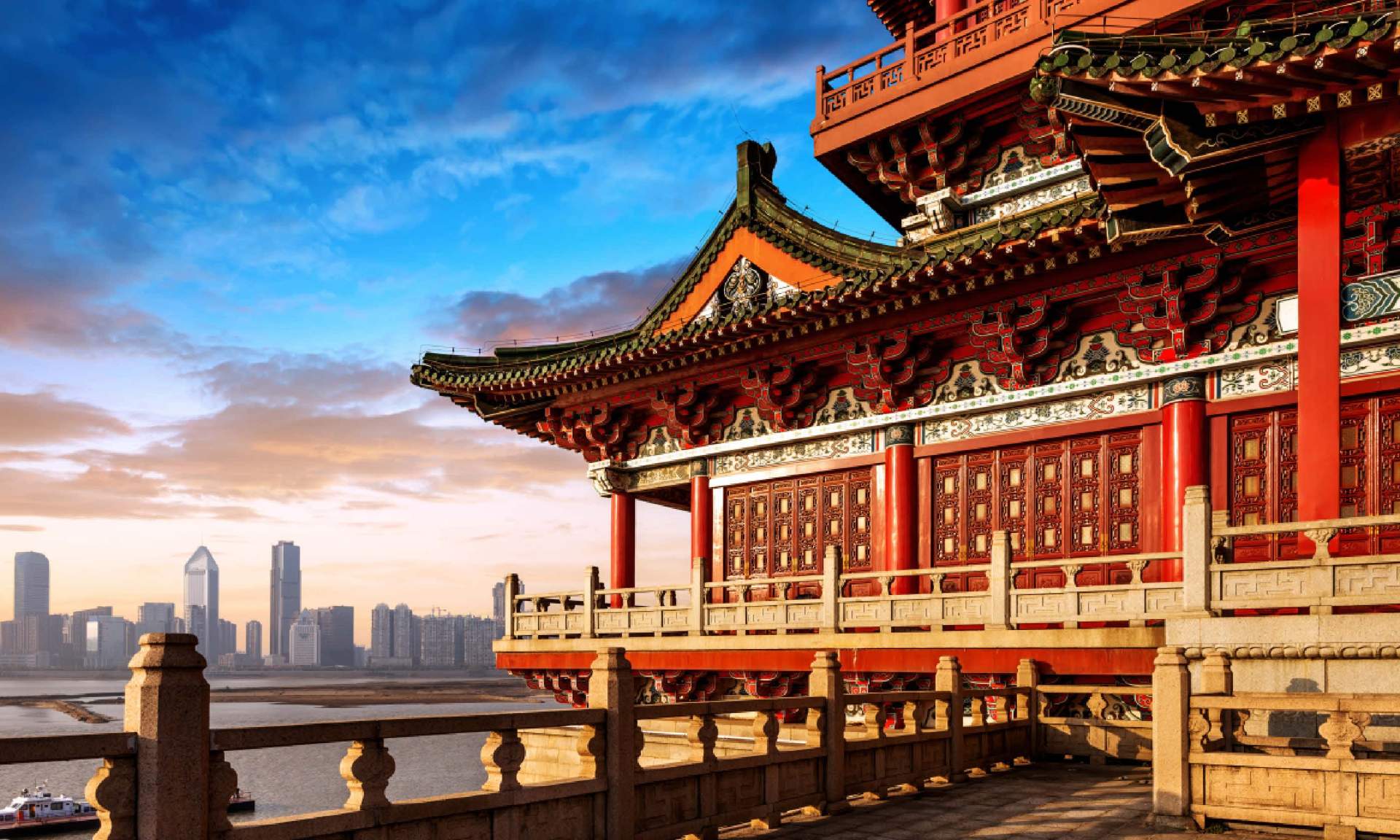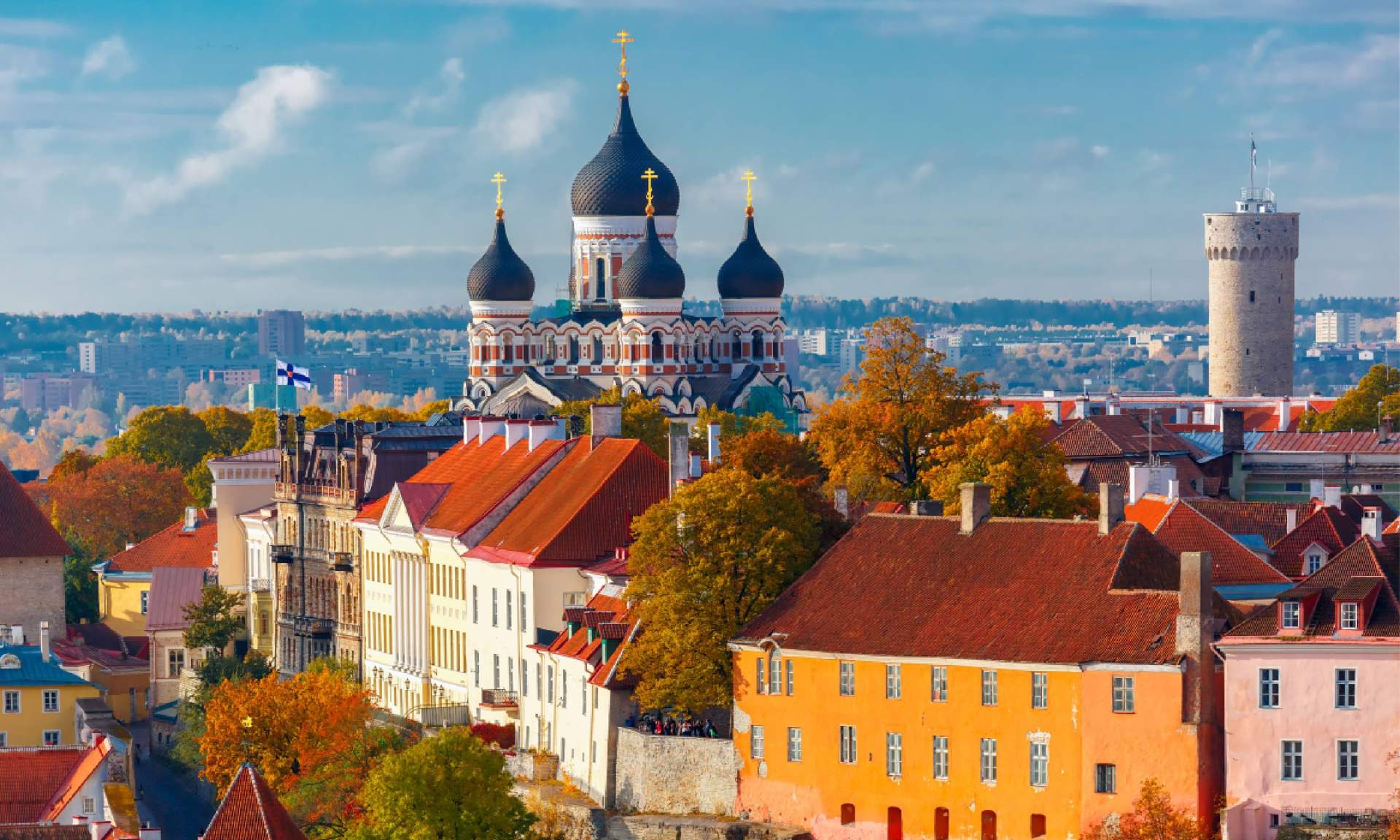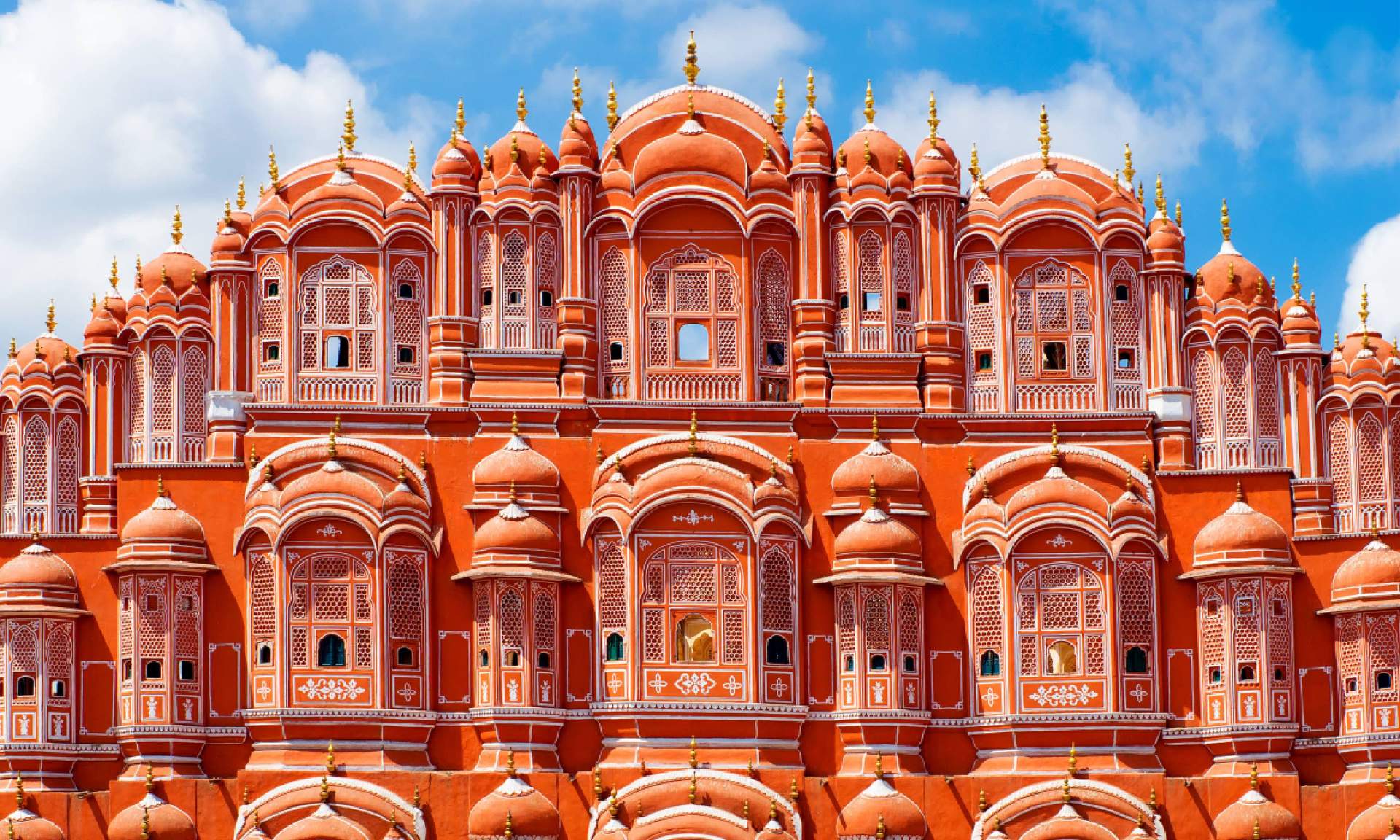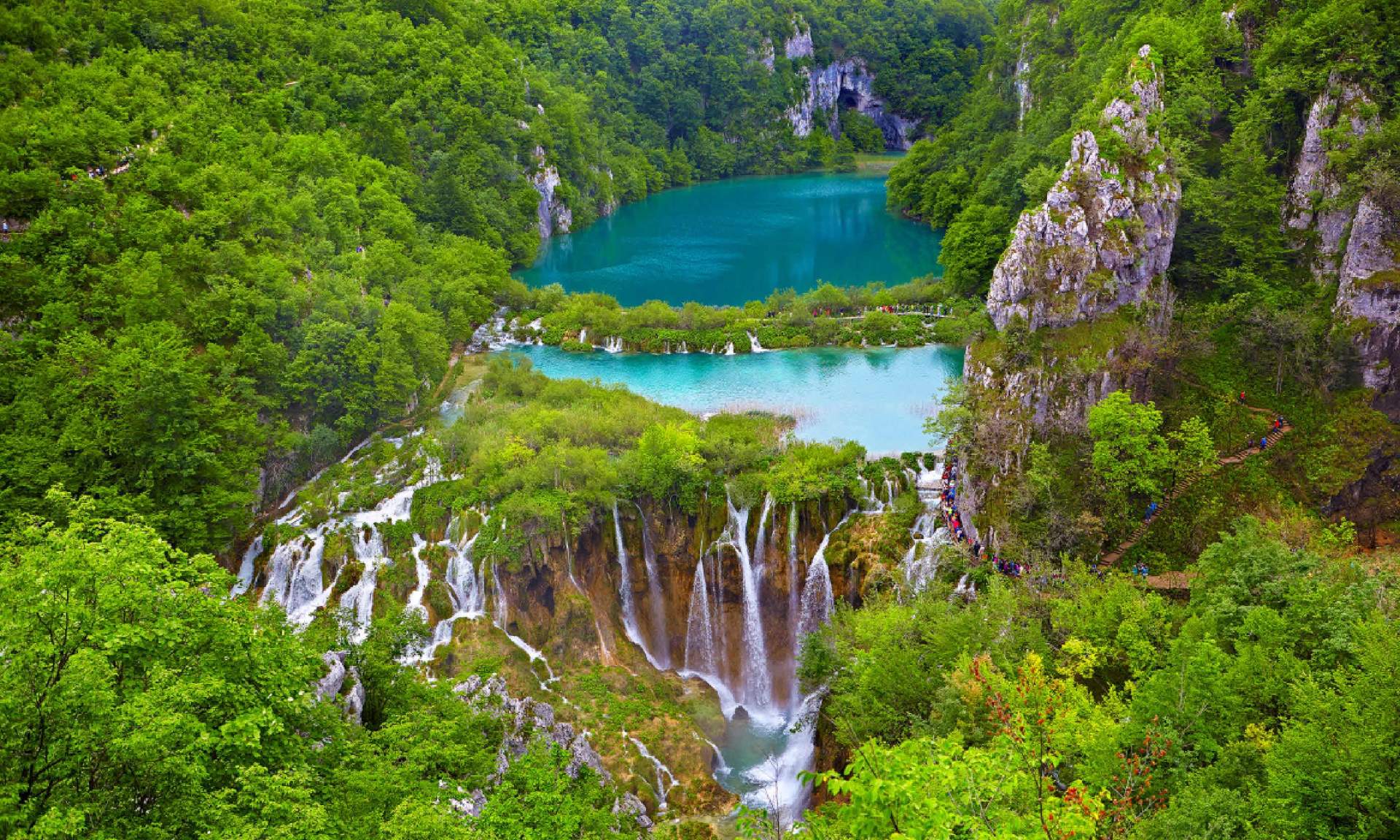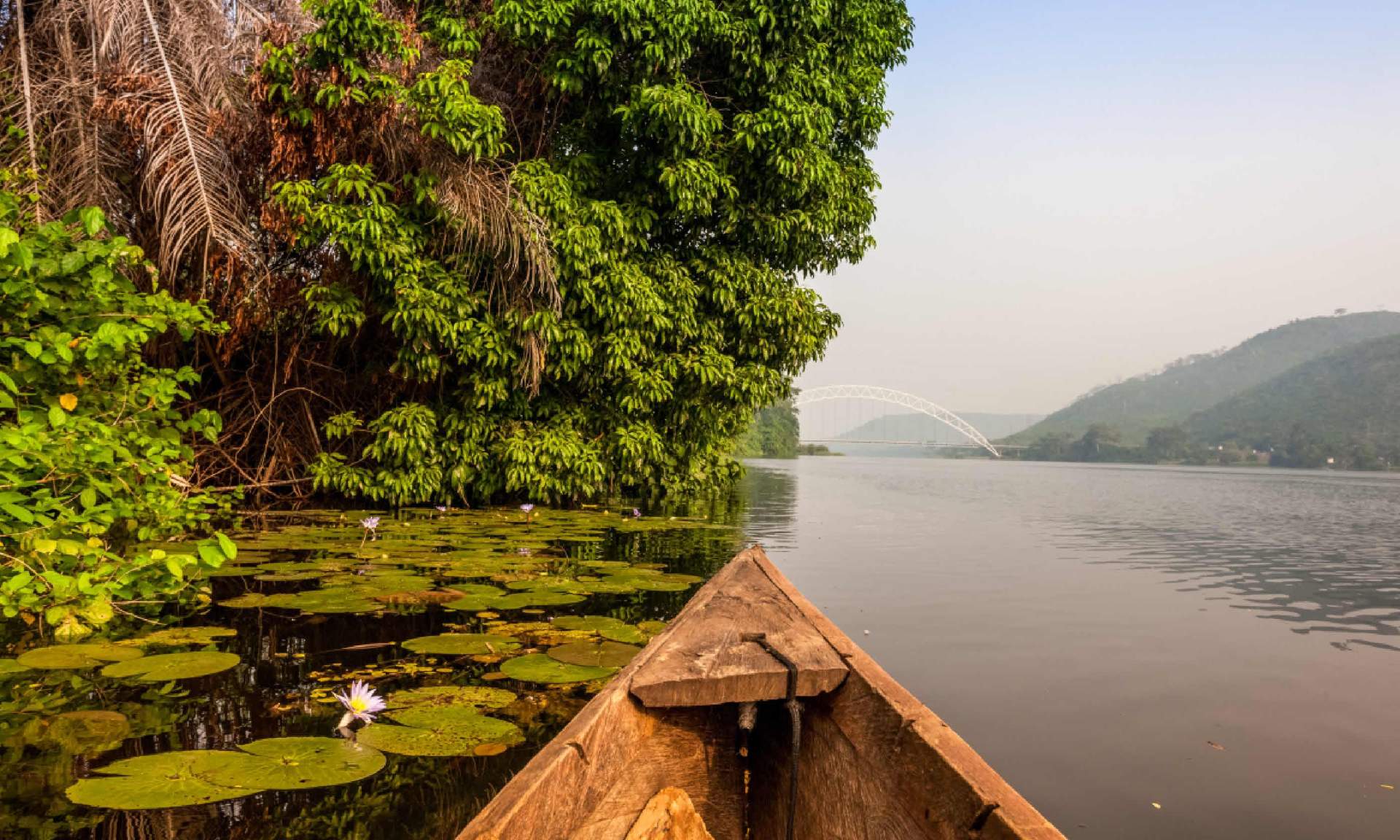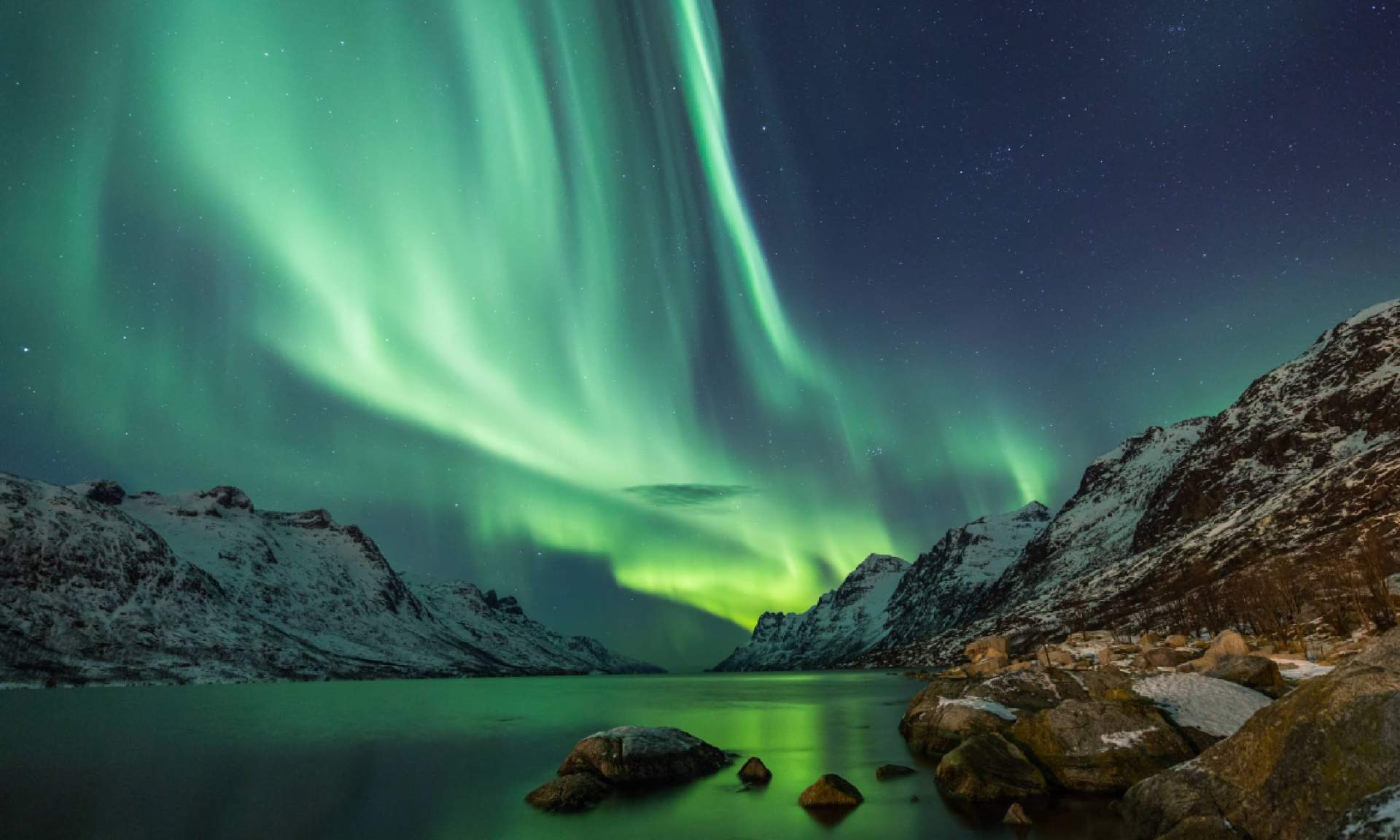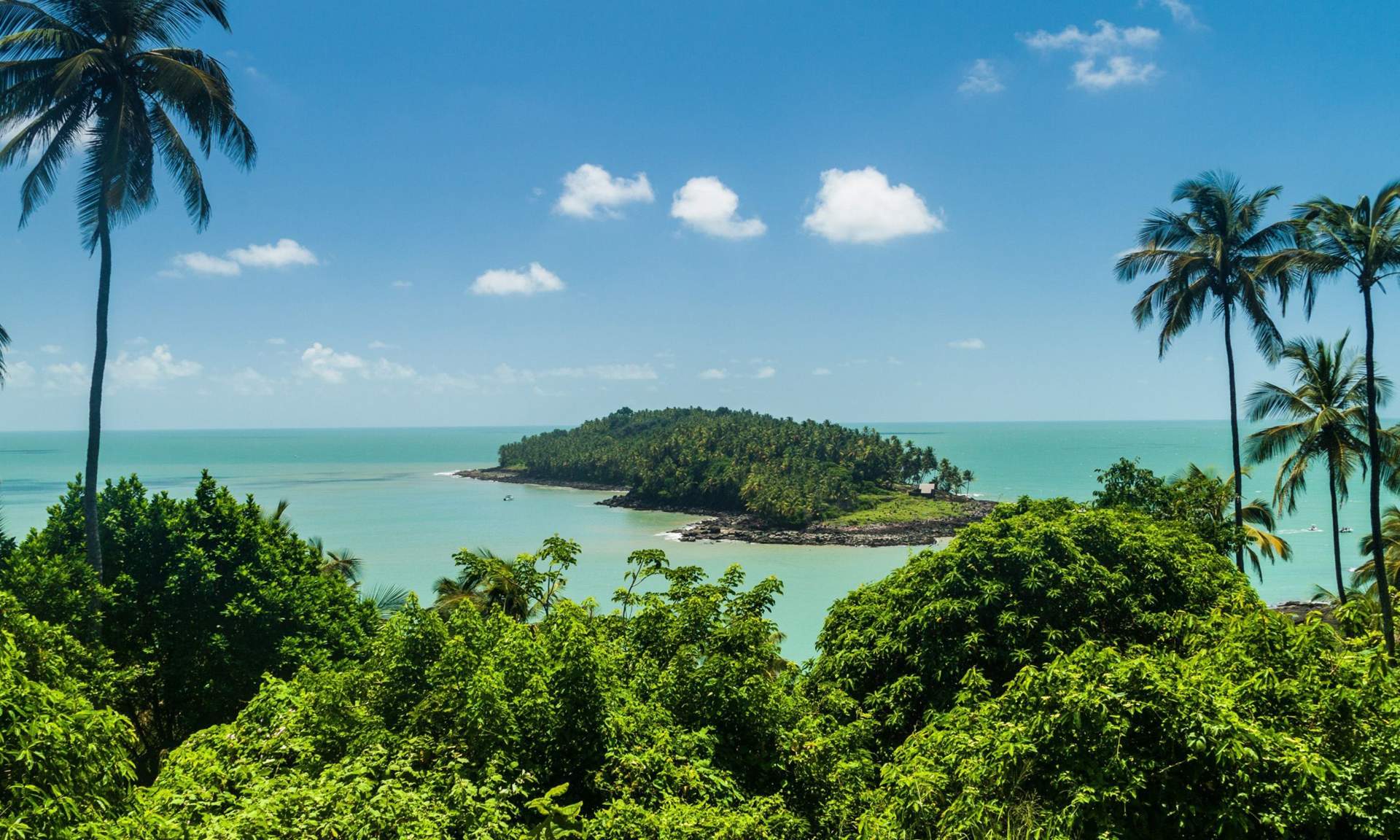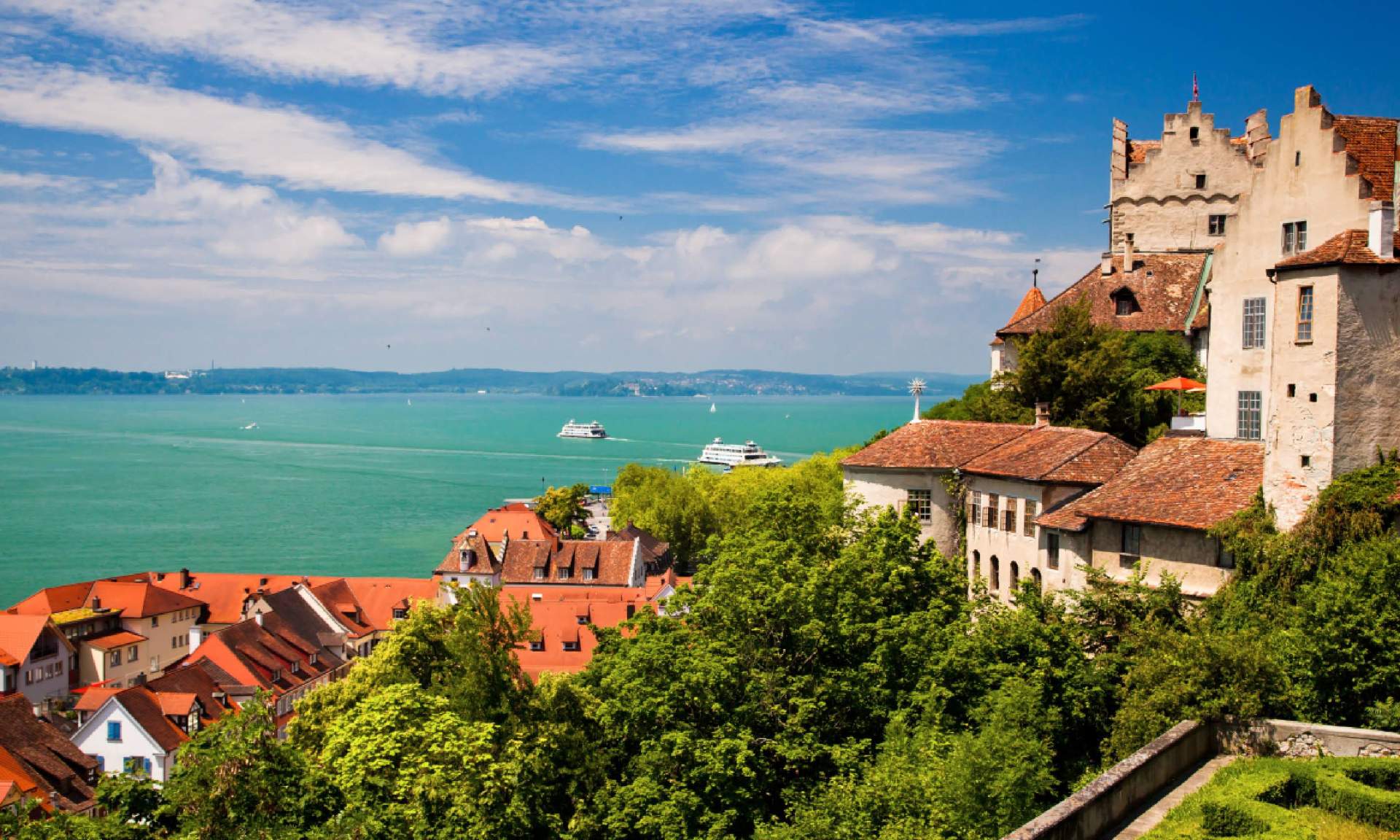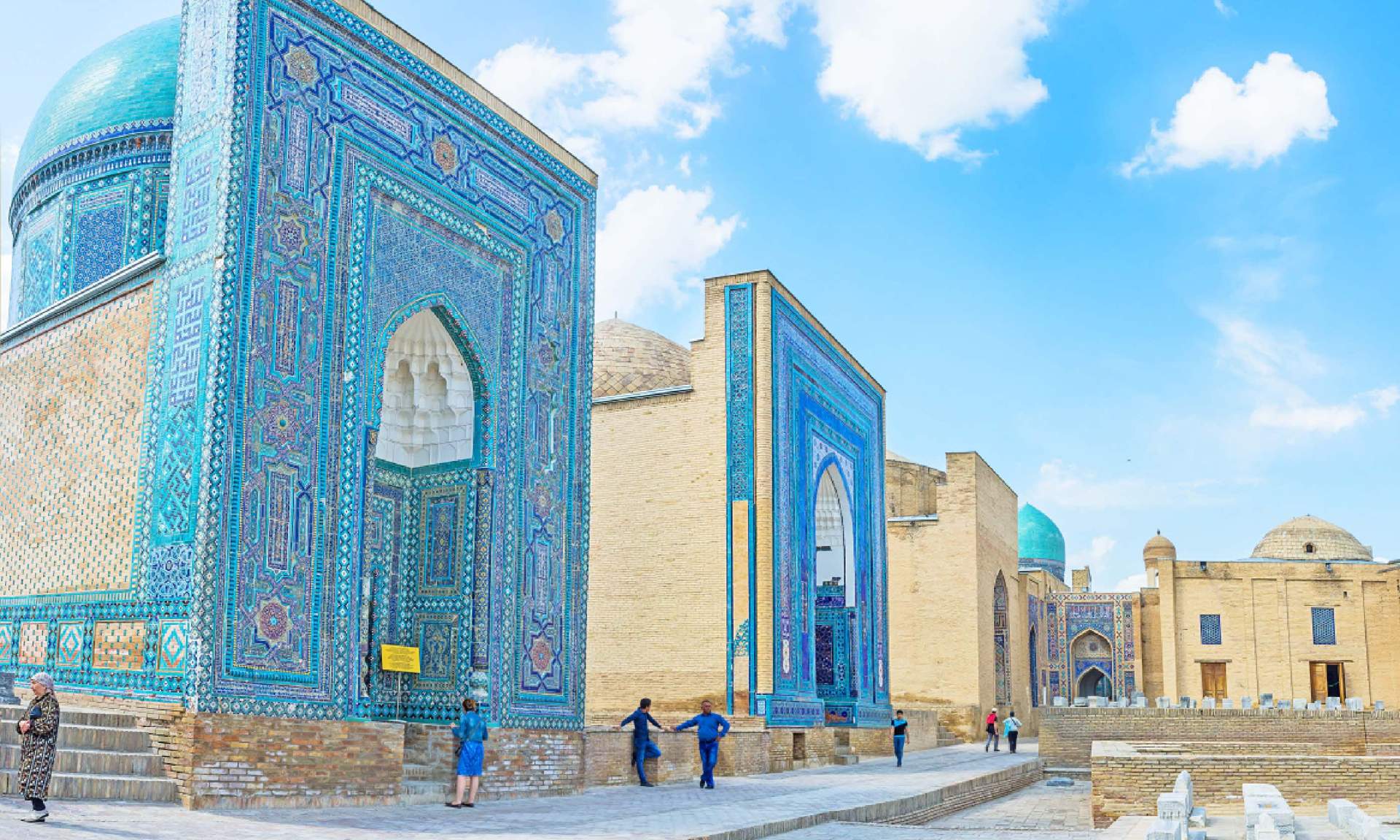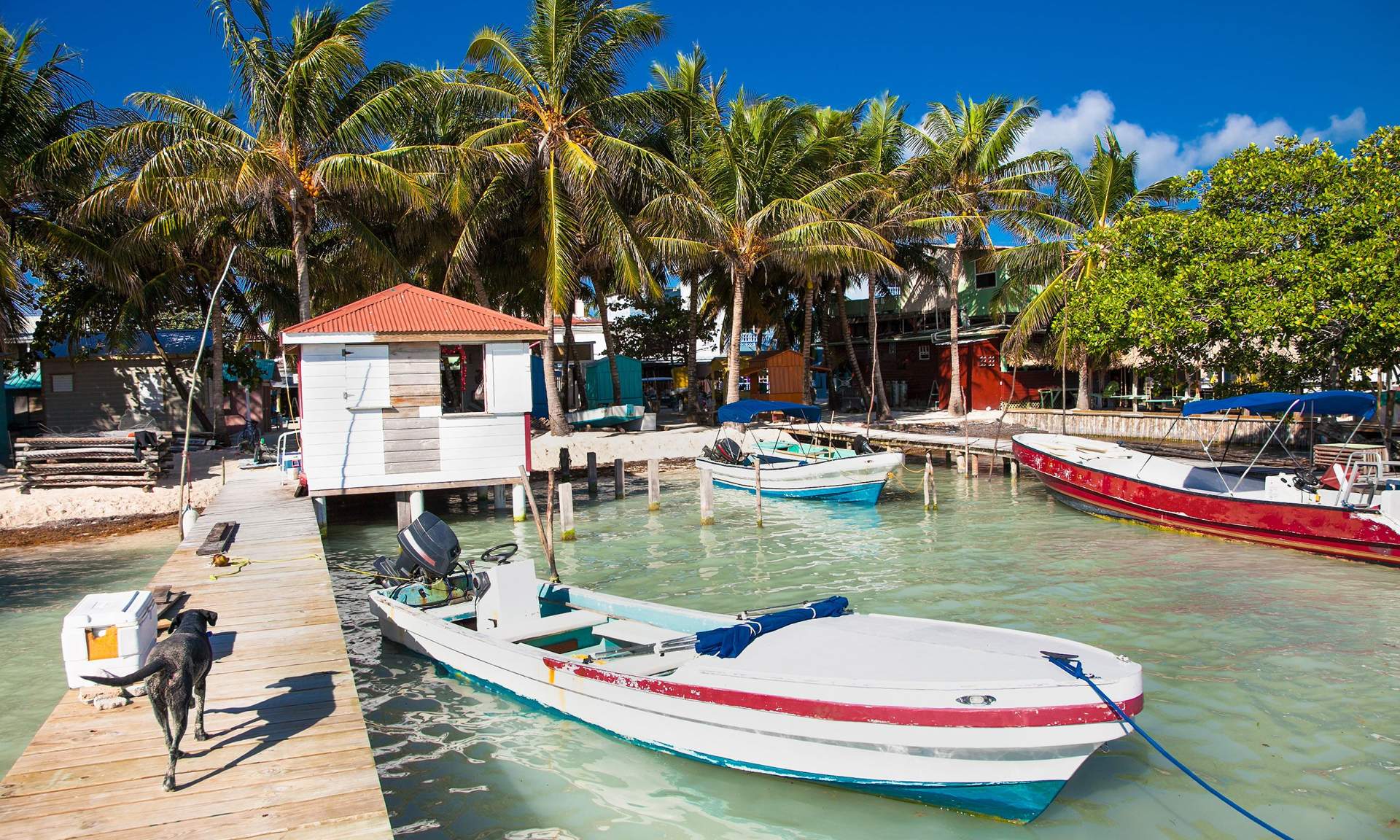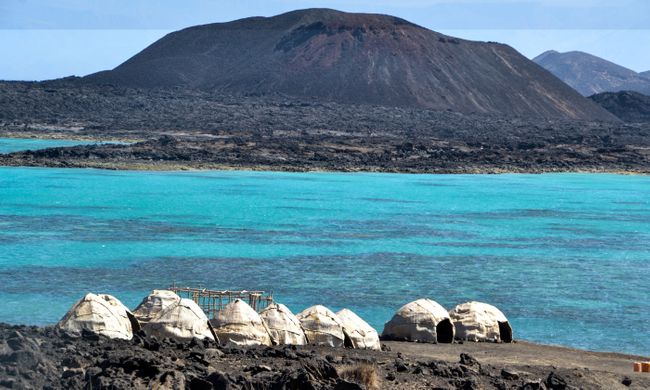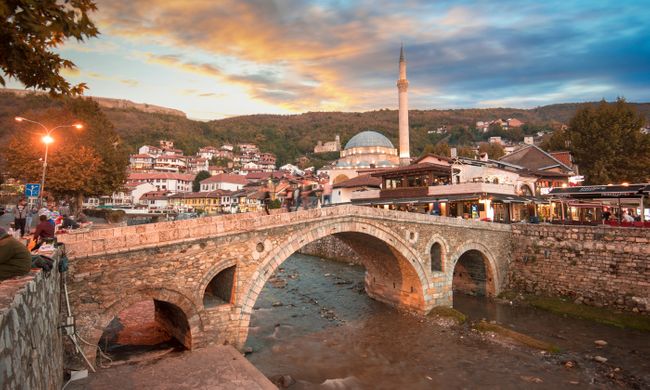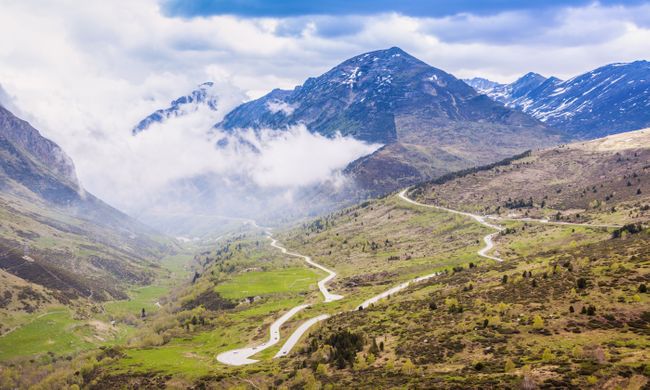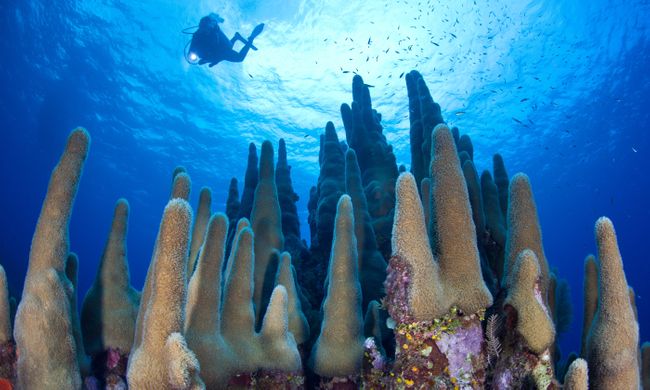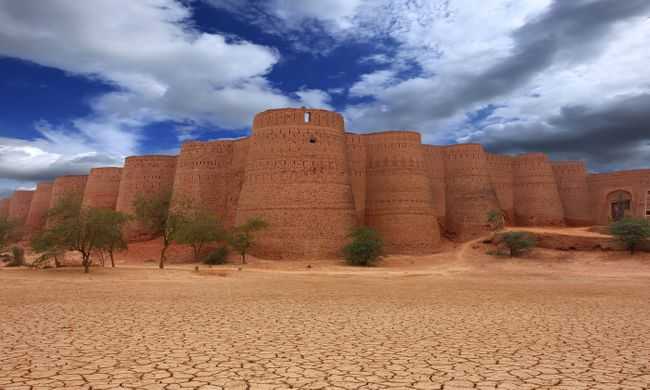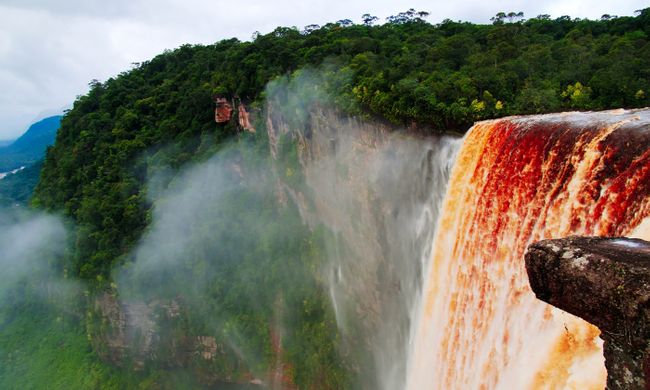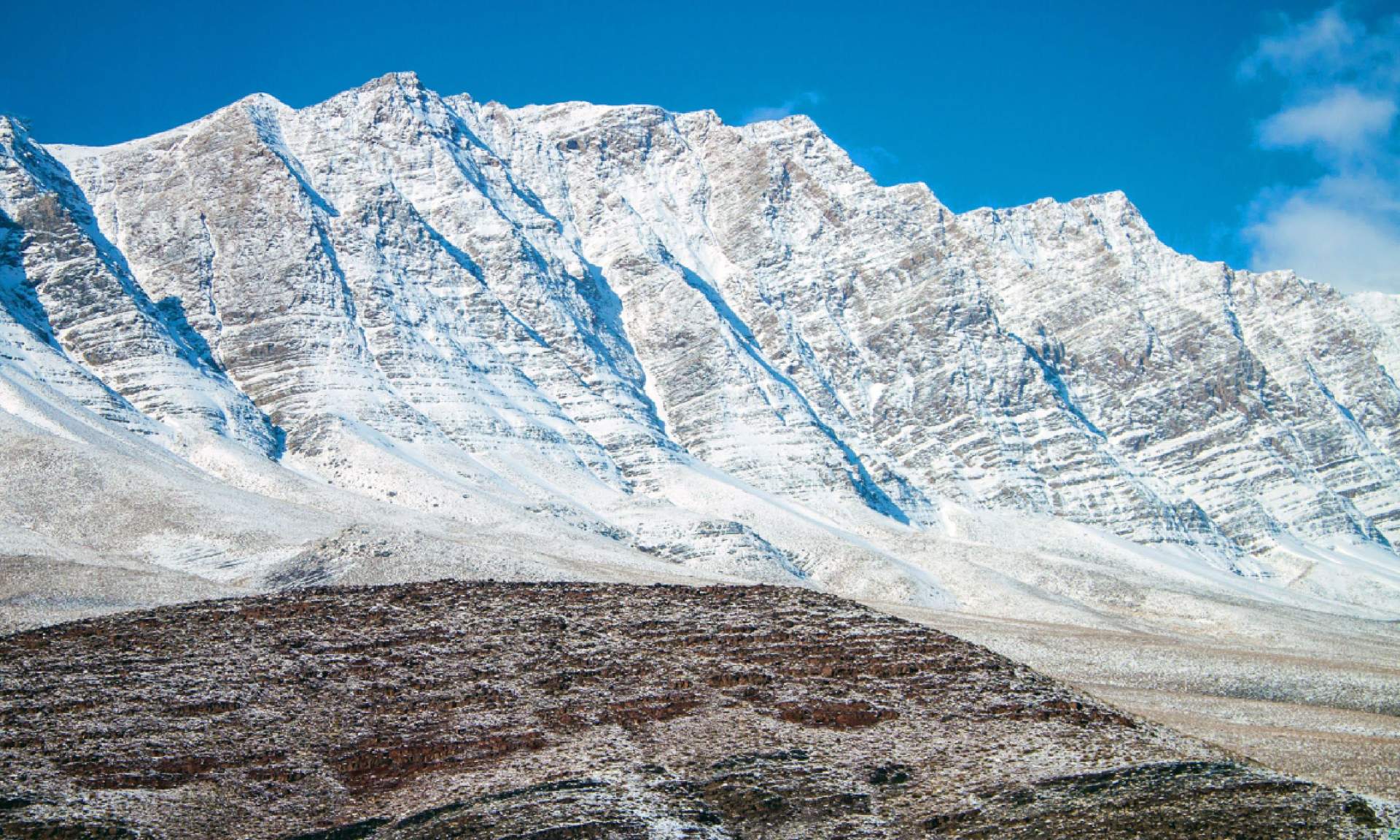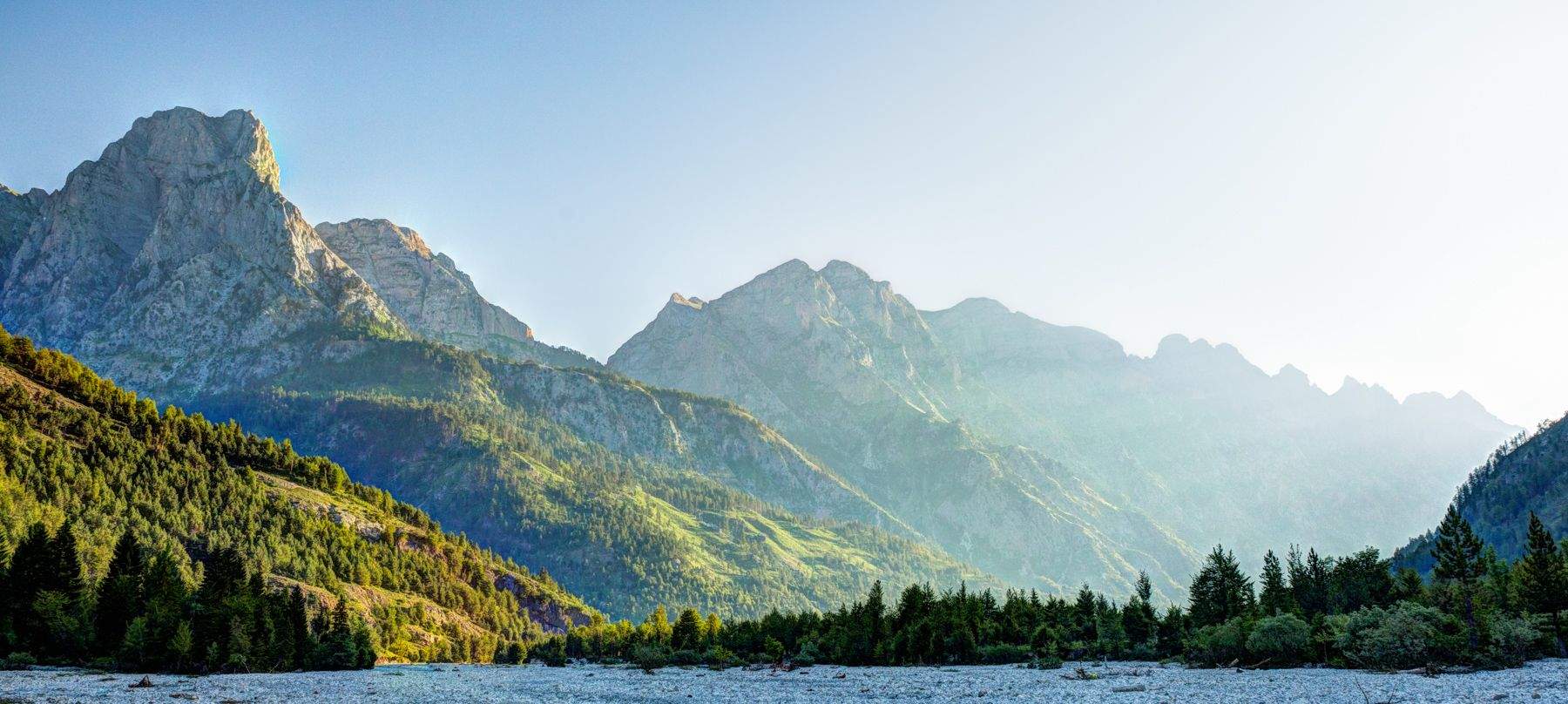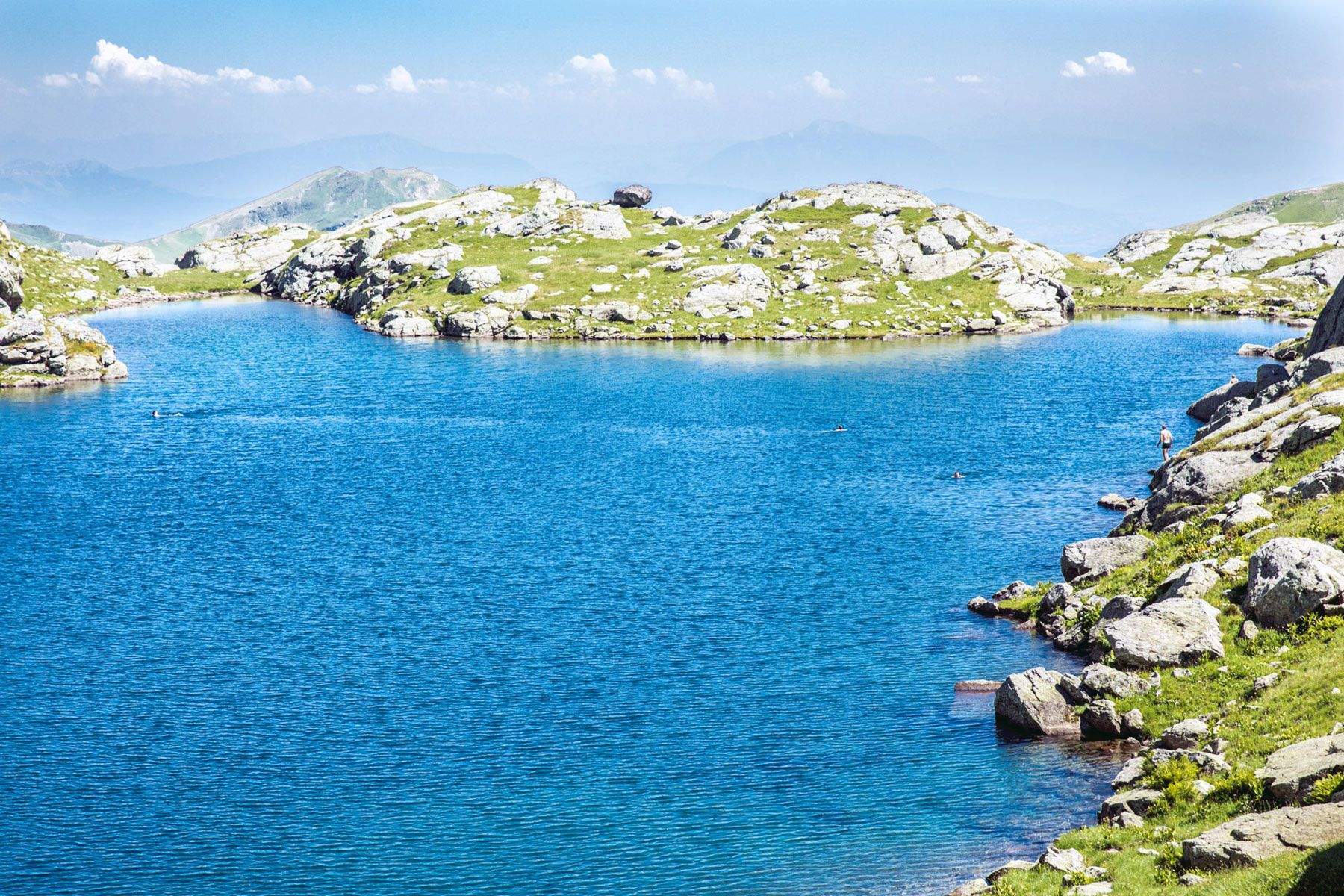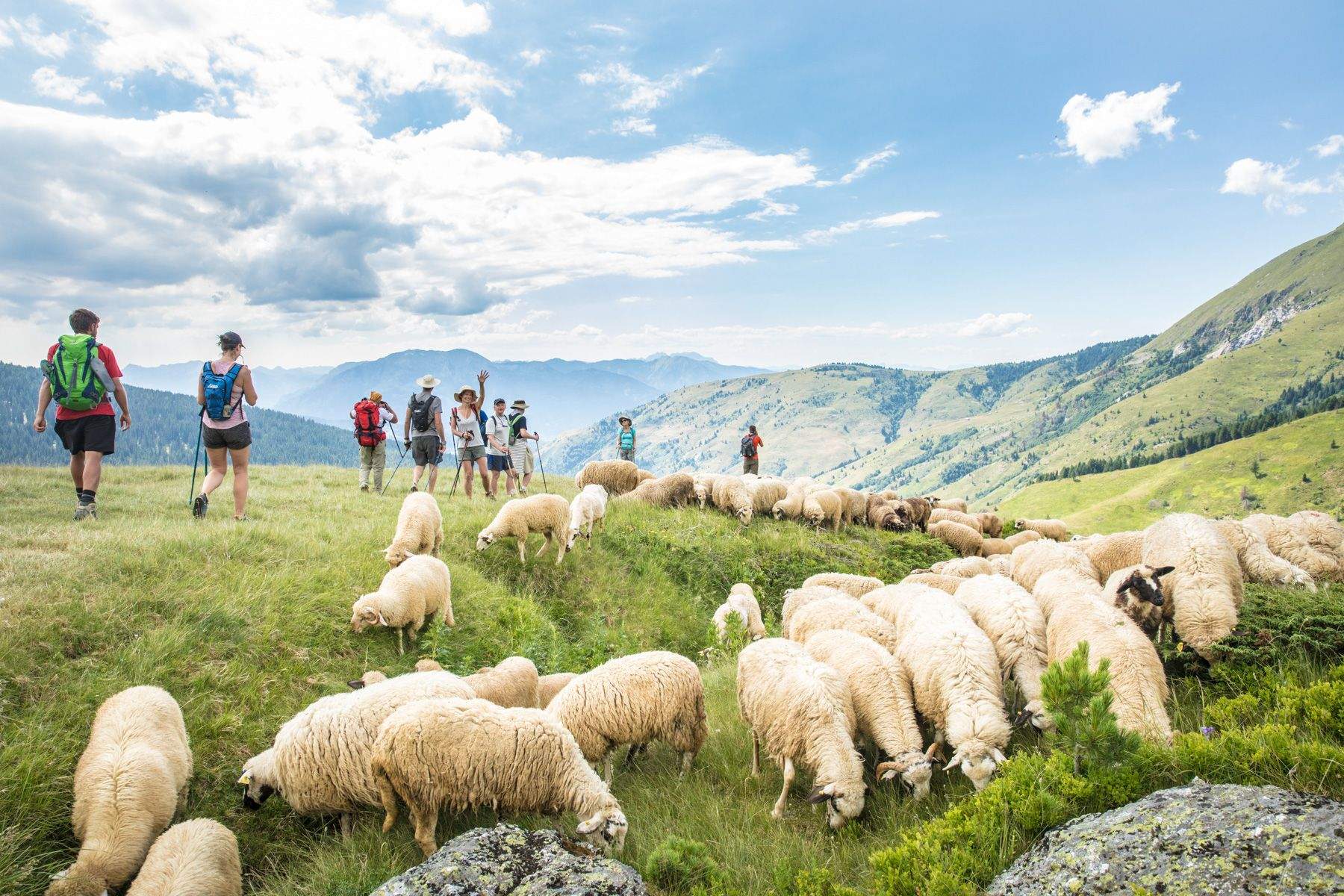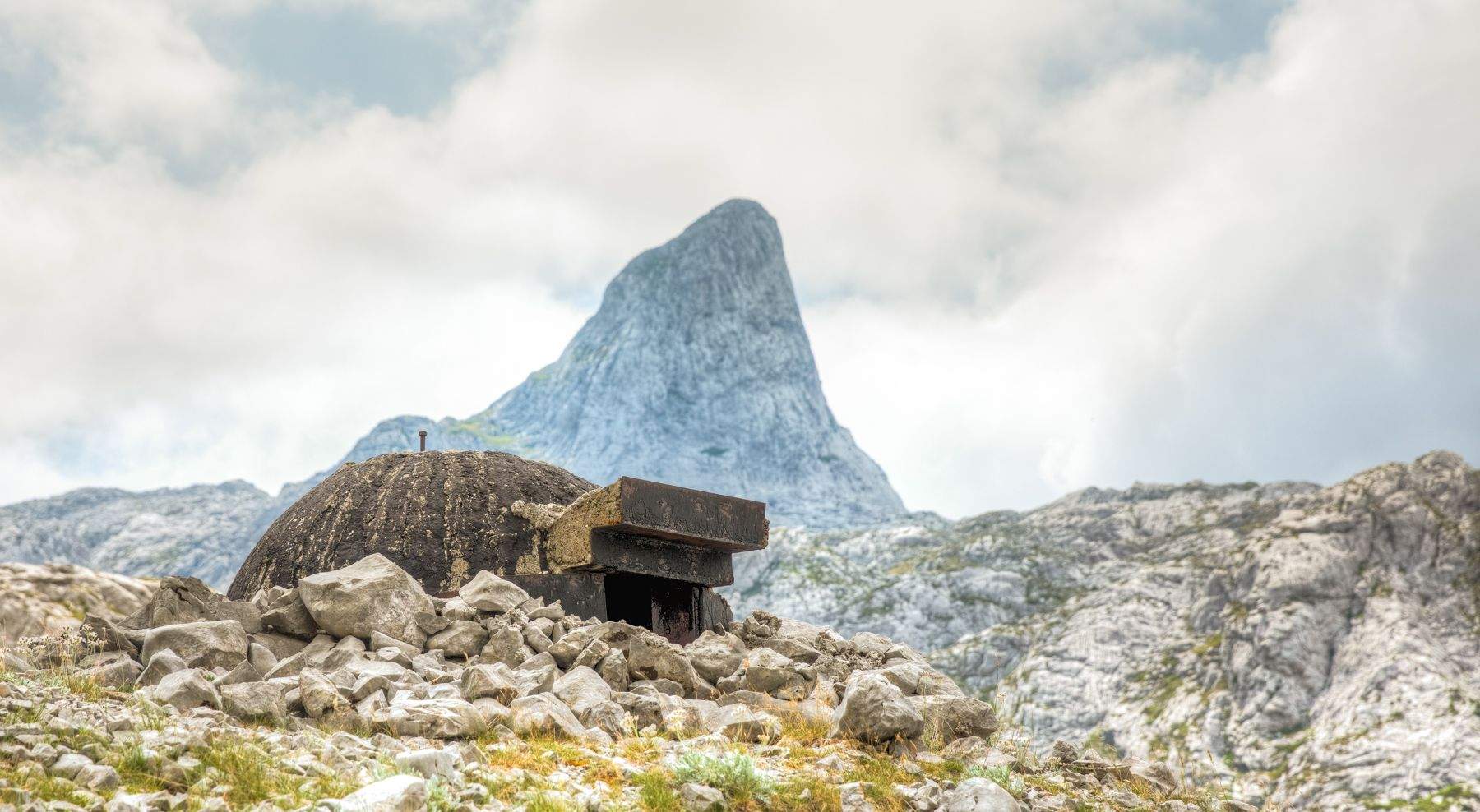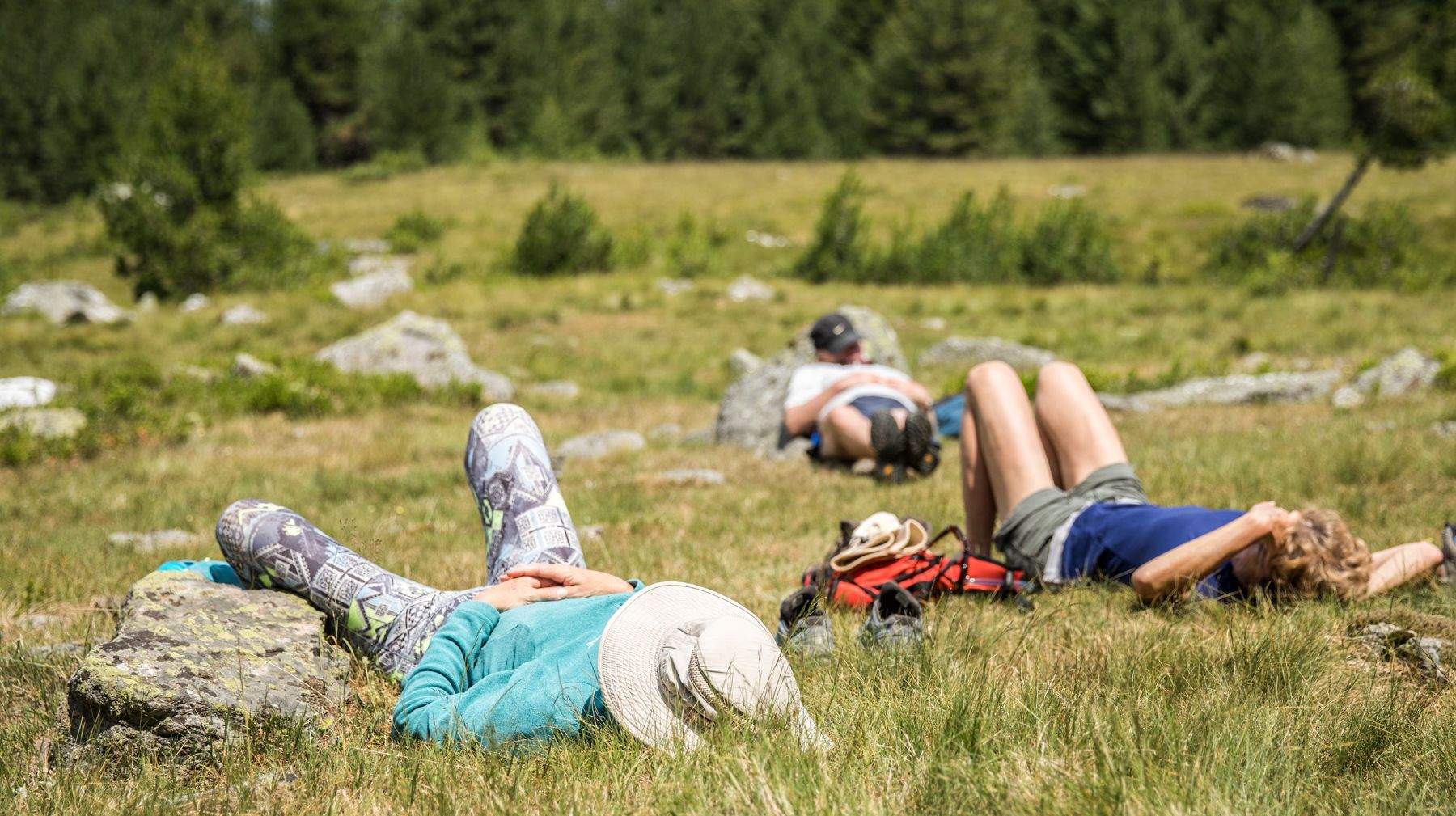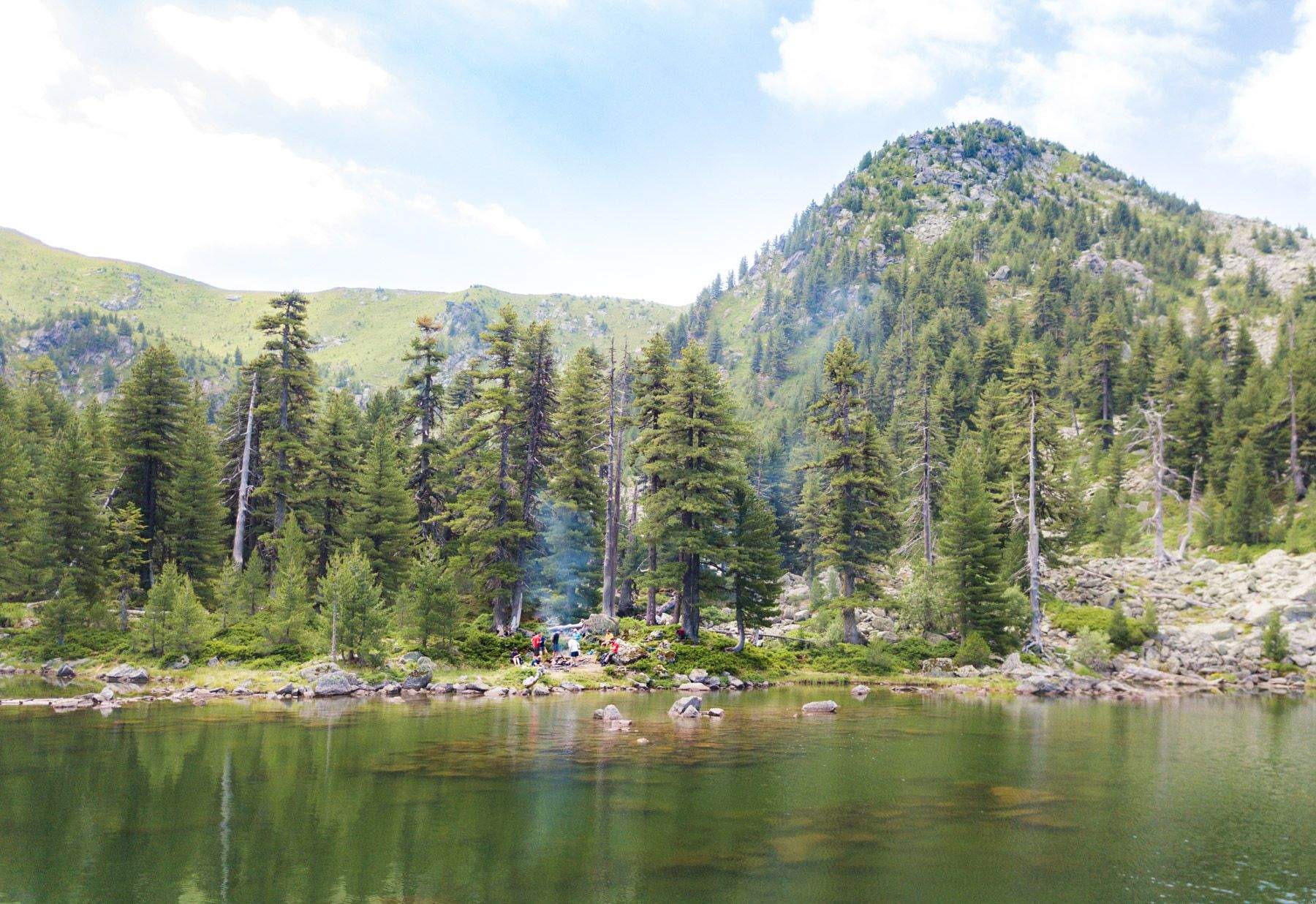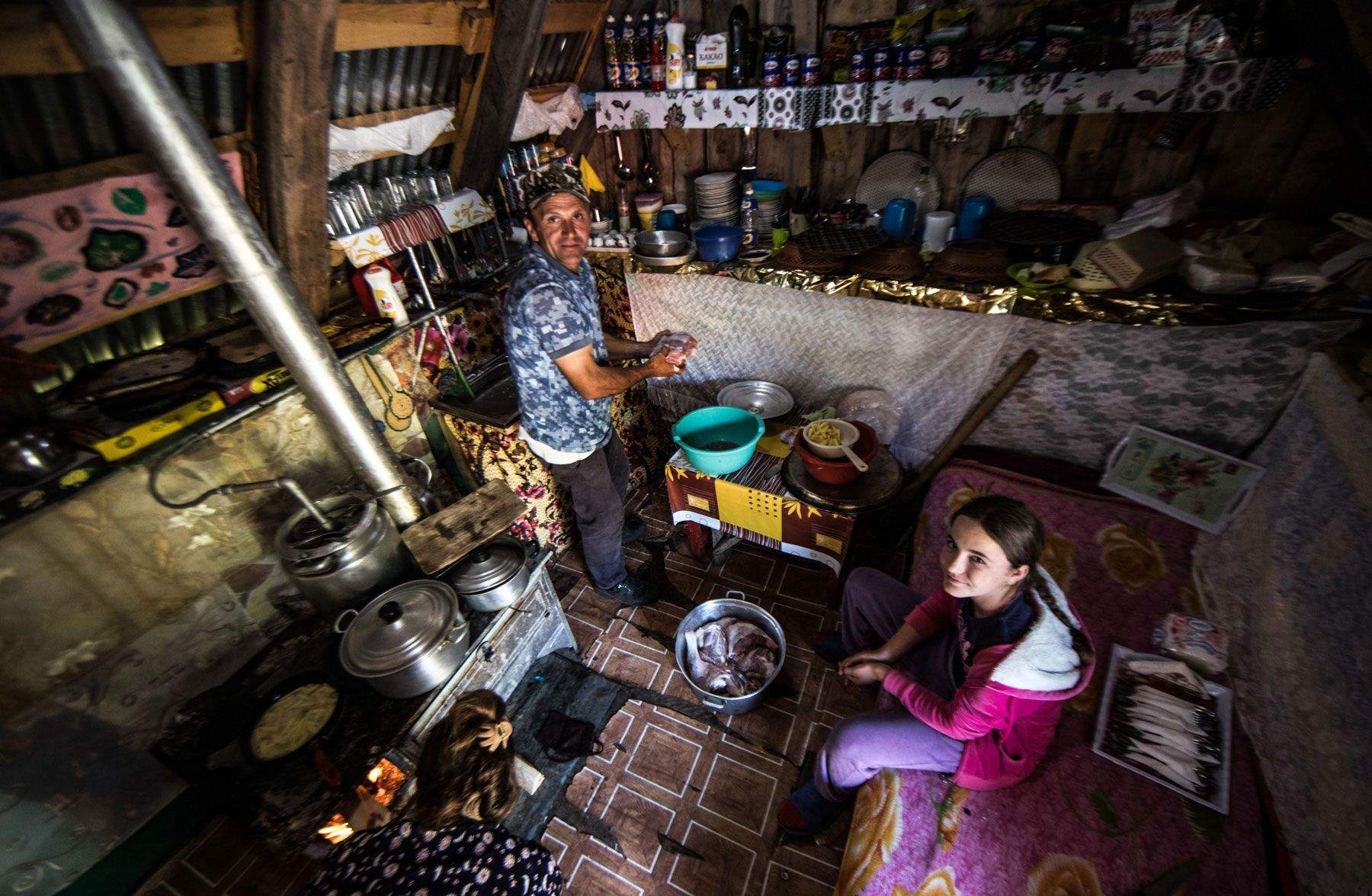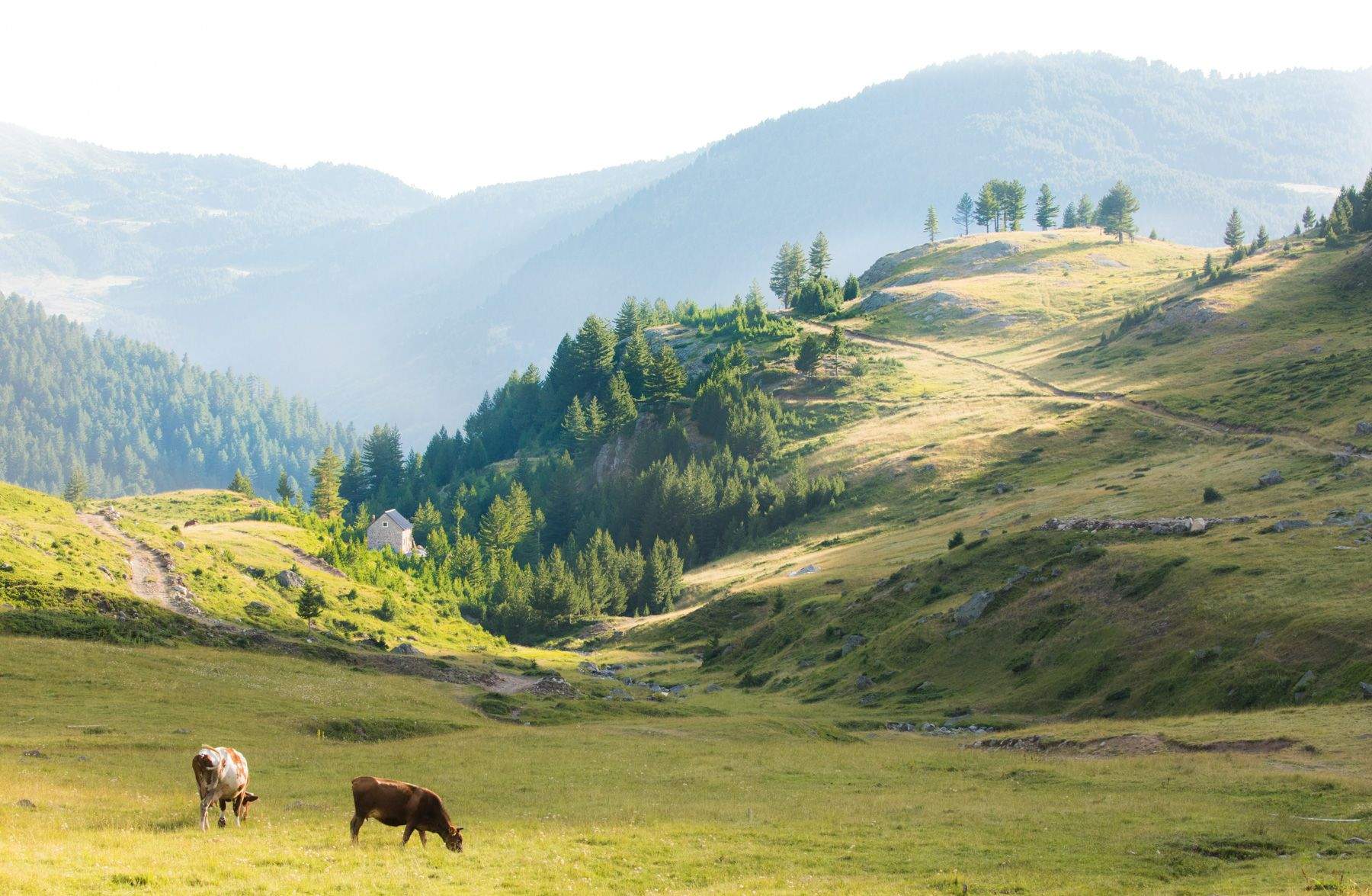1: Japan
Mt. Fuji with Chureito Pagoda in autumn, Fujiyoshida, Japan (Dreamstime)
Why it’s hot: Grab some southern comfort in the land of the rising sun.
We say: Tourism in Japan is now much more than Tokyo’s neon head-rush. Its rural corners hold just as much intrigue and, with new direct flights from London to Osaka (from 31 March), a new world is opening up further south for travellers.
While the port city is famed for its food – its okonomiyaki pancakes are legendary – it’s also a mainline to the islands beyond. The Seto Inland Sea separates it from nearby Shikoku, which still has the feel of a remote escape, with pilgrimage trails leading up into its misty mountains and world-class cycling along its coast.
Further south, Kyushu is even further off the tourist trail, pocked with forest onsen (hot springs), ancient castles (Kumamoto is one of Japan’s finest) and great hiking around Mount Aso. Beyond, dripping out into the East China Sea, lie the Ryukyu Islands, ringed with colourful reefs and clear waters. Even fewer travellers venture out here – which is why you should!
Don’t miss: The 1,200km-long Shikoku Pilgrim Trail links 88 temples and lush cedar forests. Walk the whole thing (minimum 40 days) or just try one of the easier sections.
2: North-west France
Mont St-Michel dominating the border in Normandy (Shutterstock)
Why it’s hot: New flights and the 75th anniversary of the Normandy landings mean it’s time to toast the French coast.
We say: Too often we ignore what’s on our doorstep. So, as flights launch from London Southend Airport to Brest on the western tip of Brittany in April, and the 75th anniversary of the D-Day landings looms in the calendar, there’s no better time to explore our sister coast.
Wild shores, Breton culture and grand fortifications are the building blocks of Brittany. Off the tip of bustling Brest, the craggy trails of the Île d’Ouessant make a fine aperitif for a route threading north past the pinky shores of the Côte de Granit-Rose, the cobbles, creperies and ramparts of charming Dinan, and medieval St-Malo. The historic vibe continues as Mont St-Michel glowers over the border in Normandy, a gloriously moody medieval island commune topped by an imposing abbey that sets the tone for the windswept Cherbourg Peninsula.
Bayeux (of tapestry fame) makes a good base for exploring the Second World War landing beaches along the Normandy coast. The D-Day museum in neighbouring Arromanches tells the story of how around 130,000 soldiers swarmed ashore here on 6 June 1944. Pay your respects then continue into the rural heartland of Pays d’Auge – all country lanes, Camembert and cider – before ending in Rouen, a grand medieval city heavily rebuilt, like much of the region, after the war. A fitting finale.
Don’t miss: North of Rouen lies the idyllic town of Étretat, once revered among Impressionist painters for its views. Follow trails up the white cliffs and breathe deep.
3: Jordan
The candle-lit Treasury at Petra (Dreamstime)
Why it’s hot: New flights, ancient sites and starry nights.
We say: Travellers have finally cottoned on to the fact that Jordan is as safe as its history is long. And it’s about time. Romans, Crusaders, Greeks and Nabataeans have all left their mark here – now the rest of us are following suit as low-cost flights to the Red Sea port of Aqaba offer the opportunity to plot an adventure-packed route to the capital Amman.
Aqaba was the city liberated by ‘Lawrence of Arabia’ in 1917 when he rode in and helped wrest it from Ottoman control. Today, its easy shores and coral-filled waters provide a handy base for exploring the red wilderness of Wadi Rum, an otherworldly desert where a night under the stars in a Bedouin camp conjures memories of the travellers of old. It’s also possible to trek the final stretch of the epic 650km-long Jordan Trail to Aqaba via its sands – a thrilling three-day trek.
From Aqaba, it’s just a four-hour drive to the capital, but myriad detours easily spread this over a week. Guided walks in the wild starry deserts of the Dana Biosphere Reserve and the extensive Roman ruins of Jerash are all worthy side trips. But the star attraction remains the ‘lost city’ of Petra. Slip through the canyons of the Siq, Indiana Jones fantasies rattling in your brain, to emerge at the breathtaking Treasury.
Don’t miss: If you want to skip the crowds at Petra, arrive via the rugged three-hour hike from Little Petra – part of the Jordan Trail – to emerge at the Royal Tombs. It’s the back way in!
We can’t wait to…
Charleston’s charming historic district (Dreamstime)
Seek southern comfort in Charleston
Every time we blink it seems another direct flight opens to a southern US city. In 2018 the big newcomer was Nashville, before that New Orleans. In 2019 it’s Charleston – BA is launching the first non-stop flights from London to the South Carolina city in spring; the route will run April-October. Hop aboard to stroll Charleston’s historic district and to visit the Slave Mart, which once stocked the plantations that bankrolled the city and is now home to a fine museum. Civil War-era sites, antebellum mansions, creeks filled with dolphins and manatees, and a buzzing food scene complete any visit – well, that and a cool mint julep!
4: Greenland
Giant icebergs in Greenland’s Disko Bay (Dreamstime)
Why it’s hot: With Iceland seeing 2.2 million visitors per year (6.5 times its population), we need an icy alternative.
We say: Barely 70,000 visitors arrive in Greenland each year, with a good chunk of those just stepping off the cruise ships to stretch their legs. Consequently, it doesn’t take much to find peace in the least densely populated place on Earth. So, whether it’s out among the calving glaciers and ’bergs of Disko Bay or mushing a pack of huskies into the planet’s largest national park, be sure to enjoy some alone time here.
With a wealth of new tours launching in Greenland in 2019 and opening up its little-trod nooks, it’s easier to visit than ever. Yet even on the more accessible western coast, it isn’t short of isolated adventures. From the lonely tundra you’ll find along the 164km Arctic Circle Trail to trekking on the world’s second-largest ice cap, there’s solitude aplenty.
In the south, it’s even better. There’s incredible hiking and kayaking around the glacial coast, while to the east lies the remote Ammassalik area, where fewer than 3,000 people live in a region about the size of the UK. Here, dog-sledding trips and boats heading north reveal a frozen wilderness of Thule settlement ruins and grazing musk-oxen. Breathtaking.
Don’t miss: Between November and April, Greenland’s dark skies reveal some incredible aurora sightings, best viewed in the wild on an overnight sled trip.
5: The Silk Road
Itchan Kala can be found on the Silk Road in Uzbekistan (Dreamstime)
Why it’s hot: Travel in the footsteps of ‘Lummers’ and the traders of old, darling!
We say: Where our idols go, we follow. And according to our 2018 Wanderlust Reader Awards, your enduring TV travel crush is still the absolutely fabulous Ms Joanna Lumley. With her latest series tracing the Silk Road, the ancient trade network connecting China to the West, we’re betting it’s on your list, too. And why not? The once difficult-to-visit lands it passes through have become ever more accessible to travellers – just this year, Uzbekistan introduced a new e-visa system and five-day visa-free stays for visitors in transit.
Expect romance, history and endless variety, from overlanding the rugged Pamir Highway in Tajikistan to trotting the sapphire-blue lakes and velvet valleys of Kyrgyzstan on horseback. But the wild settings are just the backdrop to cultures and traditions unchanged for centuries. Soak them up first-hand on community stays or in tales told over the crackle of campfires.
But it’s in the bazaars, caravanserais (inns) and desert forts of Uzbekistan and Turkmenistan where you’ll arguably find the Silk Road of the imagination. Here, between Samarkand’s Registan Square and the oasis of Khiva, the ghosts of travellers long past can still be felt on a journey that, for all the myriad options en route, hasn’t altered in spirit since the first camel train set out.
Don’t miss: Silk Road travellers often skip China’s western Xinjiang region, but its Uyghur culture, alpine lakes and incredible food are worth the visit. Spicy chuan’r kebabs and fried naan bread, anyone?
6: Fiji
Wainibau Waterfall in Fiji (Shutterstock)
Why it’s hot: Getting there has never been easier.
We say: Historically, Fiji has always been tricky to reach from the UK, attracting mostly honeymooners and backpackers on RTW tickets. Yet its 300-plus islands deserve far greater scrutiny, and with easier connections now via LA, Singapore and San Francisco, 2019 might just see UK travellers finally saying ‘bula’ to Fiji.
A new codeshare with British Airways flights sees visitors land at Nadi on Viti Levu. It’s a rather under-appreciated starting point, as most prefer to head for the resorts instead of the island’s rugged interior where highland treks, waterfalls and village stays show a different side to Fijian life.
That’s not to say other islands aren’t worth exploring. Paddle the remote Yasawas – Fiji has some of the best warm-water kayaking on Earth – snorkel among manta rays and explore hidden limestone caves. Bliss.
Don’t miss: Float downriver on a bamboo raft to Naihehe, Fiji’s largest cave network – complete with ‘cannibal oven’.
We can’t wait to…
A waterfall at Cardigan Bay (Shutterstock)
Take a road trip through wild Wales
While Scotland’s North Coast 500 driving route still has locals grumbling over the increased traffic, Wales has learned that variety is the answer. It has launched not one but three new road trips: the Cambrian, the Coastal and the North Wales ways. Combine them into one 700km epic or drive them over a trio of weekend breaks. We like the look of the 290km Coastal Way, which starts in the UK’s smallest city, St David’s, before winding past Cardigan Bay, medieval castles and the Italianate village of Portmeirion plus a smorgasbord of pubs, breweries, chocolatiers and even vineyards. A truly tasy escape.
7: Argentina
The colourful houses of a neighbourhood in Buenos Aires (Dreamstime)
Why it’s hot: Budget flights and some out of this world wonders.
We say: Early in 2018, travellers finally got their wish when Norwegian’s low-cost direct flights from London to Buenos Aires took to the skies. This December will see the number of departures rise to seven per week, just as a half-dozen new domestic connections put everything from the crashing falls of Iguazú to the historic streets of Córdoba and the lakes of Bariloche (from 3 December) within reach.
It all couldn’t come at a better time. On 2 July 2019, a total eclipse will rip across the skies above the Pacific Ocean and a narrow strip of South America, and anyone visiting Buenos Aires’ southern outskirts or the wine country north of Mendoza (another new low-cost connection) will get front-row seats. Coupled with the chance to explore the capital’s barrios, dance floors and necropolises, it’s this summer’s hot ticket.
Don’t miss: From 3 December, Norwegian Air Argentina will offer flights to Salta, a fine jumping-off point to explore the multi-coloured cliffs of the Quebrada de Cafayate and the high-altitude ‘Train to the Clouds’.
8: Belize
Belize’s reef is the second-largest in the world (Dreamstime)
Why it’s hot: The world’s second-largest reef is bouncing back.
We say: While little good news surrounds the Great Barrier Reef, it is a different story over in the Caribbean Sea. Here the Belize Barrier Reef Reserve System, part of the Mesoamerican Reef that runs 1,000km north from the country, has finally been removed from UNESCO’s ‘endangered sites’ list after the government passed laws to prevent oil exploration and protect coastal mangroves.
It’s great news for a country that still flies below most travellers’ radars. Inland lie jungles prowled by jaguars and the chance to canoe ancient Maya caves and explore ’lost cities’ such as the little-seen Caracol – larger than Belize’s modern-day capital.
The coast is the real lure, though. Snorkel or dive among its reef sharks and parrot fish, or explore the white sandbanks of Glover’s Reef by kayak, while few sights match the sapphire iris of the Blue Hole marine cavern.
Don’t miss: Around 1,000 manatees live off the Belize coast, with Manatee Lodge running trips to the South Lagoon where many gather.
9: Georgia
Hiking the mountains of Georgia (Shutterstock)
Why it’s hot: Trains, trails and culture in the Caucasus.
We say: As the middle stop on the new Baku-Tbilisi-Kars (BTK) line – Europe’s next great rail adventure – the Georgian capital Tbilisi is poised to steal our affections again. Reports say the route from Azerbaijan to Turkey may open to travellers in early 2019, but direct UK flights mean many are already discovering the former Soviet nation.
Tbilisi is a hip city with a growing foodie reputation stoked by interest in its ‘amber wine’ and chacha brandy. Sulphur baths, Zoroastrian fire temples and the cave city of Uplistsikhe show there’s history here, too.
Away from the capital, the Transcaucasian Trail (TCT) is an ongoing project plotting a 3,000km route across to Armenia and Azerbaijan. Money to tidy up each section is raised from hikers joining trips to test out the new paths.
Don’t miss: The Svaneti trail is among the TCT’s newest sections, and direct flights from Luton to Kutaisi are opening up the area and its incredible walking.
We can’t wait to…
Sweden’s very own Stonehenge – Ales Stenar (Shutterstock)
Pedal Sweden’s southern coast
June 2019 is set to see the completion of Sweden’s latest national cycle trail, the Sydkustleden. The route between Simrishamn and Helsingborg links up two existing trails to complete a 900km network that loops down from Växjö and back up to Gothenburg via the southern coast of the Skåne region. Explore lush fortresses, hip Malmö and even ‘Sweden’s Stonehenge’ (Ales Stenar). The area is known for its food, so be sure to fill up on egg cakes and spettekaka, a ribbon-like sugary treat baked on a spit. But the sweetest joy is simply pedalling the serene countryside.
10: Colombia
The ‘lost city’ of Teyuna (Shutterstock)
Why it’s hot: This fast-changing Latin country is full of surprises.
We say: After the 50-year war in the Colombian Amazon ceased in 2016, explorers entered its table-top tepuis and jaguar-prowled jungles to discover cave art dating back 20,000 years. In 2018, as part of the expanded Chiribiquete National Park, it became UNESCO’s latest World Heritage Site.
It’s indicative of a Colombia that is changing at lightning pace. Even Bogotá has shed its fearsome reputation to embrace hipster coffee shops, books and bikes. Once no-go zones, cities such as Medellín and salsa capital Cali now trade on their old notoriety: a tour of the luxury La Catedral ‘jail’ drug lord Pablo Escobar had built for himself is a must.
Then there’s the sites few travellers know about: the ‘lost city’ of Teyuna, Colombia’s answer to Machu Picchu; the cavernous salt cathedral of Zipaquirá, and the miraculous five-colour river of Caño Cristales. What have you been waiting for all this time?
Don’t miss: After visiting Bogotá’s dazzling Gold Museum, head to Mount Monserrate (3,152m) – the steep walk up yields incredible views of a rapidly evolving capital.
11: Bulgaria
It’s easy to see why beautiful Plovdiv is this year’s European Capital of Culture (Shutterstock)
Why it’s hot: Culture meets coast in eastern Europe.
We say: Despite their rich history and soaring peaks, Bulgaria’s hinterlands have largely failed to register with travellers more familiar with its cheap pistes and laid-back capital. But, as European Capital of Culture Plovdiv puts the rugged south-west on the map in 2019, that may be about to change.
As one of Europe’s oldest inhabited cities, Plovdiv wears its history lightly – there aren’t many places where you can glance from Roman theatre to Ottoman-era mosque. Wander its cobbled Old Town and crumbling fortresses, then head for the Rhodope Mountains where scenic trails wind past Byzantine and Crusader relics.
The country’s historic east coast is opening up, too, as new low-cost flights to the Black Sea city of Burgas launch from nine UK airports in May. Combine a visit with exploring rose-pink salt lakes, former pirate islands and some dramatic kayaking.
Don’t miss: Not far from Plovdiv lie the pin-striped monasteries, hiking trails and hidden vineyards of the Rila Mountains, a rugged escape far off the tourist trail.
12: Rwanda
Two Giraffe in Akagera National Park (Shutterstock)
Why it’s hot: Its wildlife is finally bouncing back.
We say: More than doubling the cost of gorilla trekking in Rwanda compared with neighbouring Uganda has had a not unexpected effect. Early reports show visitor numbers at some lodges may have dropped 40%. But it might also yield the benefit of shifting attention to other wonders.
The big draw in 2019 is the expected opening to visitors of Gishwati-Mukura National Park in the north-west. Its wildlife suffered greatly in the wake of the 1994 genocide when returning locals tore down trees to rebuild homes, but it’s now set to rival the country’s top chimp-tracking spots.
Another of Rwanda’s under-the-radar successes is Akagera National Park, one of Africa’s largest protected wetlands. Having lost many of its animals during the war, it can now claim ‘big five’ status after the recent reintroduction of the eastern black rhino.
Don’t miss: Trek up Mount Muhabura in Volcanoes National Park to swim the crater lake marking the border with Uganda.
We can’t wait to…
Charming Matera is one of two cities to be names European Capital of Culture (Shutterstock)
Find culture underground in Italy
This year sees a pair of cities take the European Capital of Culture crown – Plovdiv in Bulgaria and Matera in southern Italy – shining a light on some of the continent’s better-kept secrets. The limestone caves of Matera were formed naturally and some 9,000 years ago its sassi (cave dwellings) formed the bones of a vast underground city. The newfound spotlight may well see the ancient hilltop town’s rock-hewn churches, cosy grottoes and excellent hiking trails in the nearby Alta Murgia National Park swiftly overrun, so our advice is to get there soon. There are few places quite like it.
13: India
Humayun’s Tomb, Delhi, India (Dreamstime)
Why it’s hot: New flights and old icons combine.
We say: Indian visas may still cost a fortune, but change is afoot as the first low-cost UK flights land in New Delhi (via Reykjavik) this December. The catch for UK travellers is an extended flight time – double that of most direct routes – but an Iceland stopover is hardly a bad trade-off.
The new flights arrive in time to mark 150 years since the birth of Mahatma Gandhi, the man who led India to independence. Pay a visit to Gandhi Smriti, the Delhi house where he was assassinated in 1948, and wander his old quarters, preserved just as they were at the time of his death.
Meanwhile, the National Gandhi Museum offers the chance to explore his legacy, and that of his satyagraha philosophy of non-violent resistance, through some of the objects – shawl, watch, even one of the bullets that struck him – that defined his life.
But Gujarat is where Gandhi is best remembered. In Ahmedabad you can even live as he did, with a mindful stay at the Kochrab Ashram that Gandhi built in 1915, or just wander the famous riverside Sabarmati Ashram that was his long-time home. Finish in his birth city of Porbandar, where a shrine to his life (Kirti Mandir) was built next door to his ancestral residence upon his final release from prison in 1944. A fascinating look at a crucial period of India’s past.
Don’t miss: Pay a visit to the Gir Forest National Park to glimpse Gujarat’s other icon, the Asiatic lion. The west Indian state is the last remaining refuge of the endangered beasts, of which only a few hundred are left.
14: Nepal
A tiger in Nepal (Shutterstock)
Why it’s hot: Explore a conservation success story.
We say: With news that since 1970 humanity has wiped out 60% of animal life on the planet (WWF), we’re pleased to see Nepal is bucking the trend. As of late 2018, Bengal tiger numbers here have risen to around 235, up from an estimate of 120 individuals in 2009; there are only about 4,000 in the world. Coupled with the rise in one-horned rhino at Chitwan NP and the upgrade of Shuklaphanta Wildlife Reserve to national park status in 2017, Nepal is fast becoming a wildlife haven.
But since the 2015 earthquake, the number of visitors to Nepal is still down. It’s definitely time to head back. Head for Chitwan to spot gharials, elephants, sloth bears and tigers (some 120 roam here). Or seek out the overlooked gem of Bardia NP in the southern lowlands, visited by fewer than 20,000 people a year yet roamed by some 50 tigers.
Don’t miss: Chitwan’s Tiger Tops Elephant Camp outlawed elephant-back safaris in 2015, but you can now spend a day with a mahout, caring for these incredible animals instead.
15: Mexico
The Sanctuary of Atotonilco is dubbed as Mexico’s Sistine Chapel (Shutterstock)
Why it’s hot: Soak up the cultured highlands of Guanajuato State.
We say: It was silver that first bankrolled San Miguel de Allende. During Mexico’s early colonial period, the city was a waypoint for the metal torn from the Central Highlands. Now the money comes from visitors, drawn by the Spanish-style cobbles and grand San Miguel Arcangel Parish Church. However, as 2019’s American Capital of Culture, it’s only likely to get busier. So, once you’ve explored the baroque centre and Juarez Park, you’ll do well to escape to Guanajuato’s underrated fringes.
Here, natural hot springs break up the cacti-prickled hills, while horse-riding treks provide a good way to visit the state’s colonial relics. The semi-abandoned town of Mineral de Pozos, where you can explore the remains of around 500 mines in the surrounding hills (bring a torch), and the pre-Hispanic ruins of Cañada de la Virgen only add to the sense of a bygone Mexico frozen in time.
Don’t miss: Check out the UNESCO-listed Sanctuary of Atotonilco, dubbed ‘Mexico’s Sistine Chapel’ for its vivid baroque frescoes.
We can’t wait to…
Overlooking Lake Ohrid in Western Macedonia (Shutterstock)
Walk Albania, Kosovo and Macedonia in 20 days
The Balkans isn’t short of hiking trails, though the newly marked High Scardus Trail mercifully stops short of the 1,930km required to top the eight-country Via Dinarica route. A mere 495km, it finds its second wind in the glacial lakes and alpine forests of the Shar Mountains, having risen up from the towns along Lake Ohrid in western Macedonia. From there the trail traverses three nations, crossing parts of Kosovo and Albania’s Korab-Koritnik Nature Park, home to wild brown bears, wolves and roe deer, before pressing on to Lake Prespa and its amazing birdlife. A Balkan epic.
